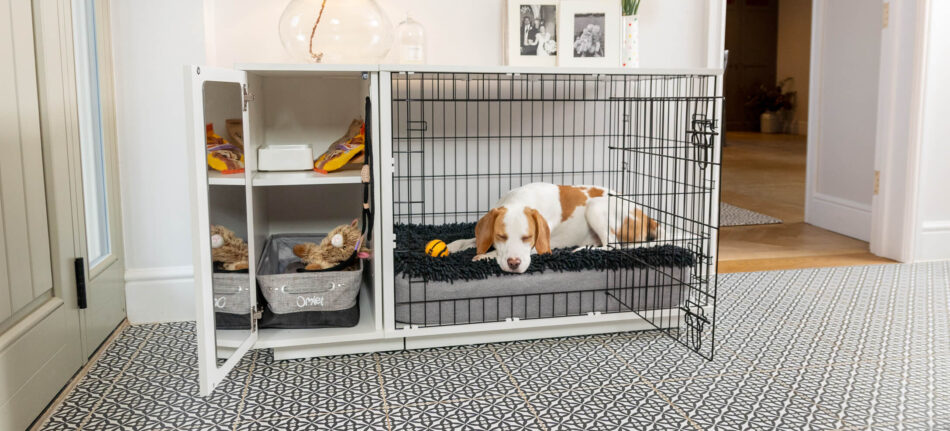
Any dog-loving pet parent will agree that when it comes to our pets, dogs are part of the family, too! And just as we prioritize good hygiene for ourselves, it’s important to keep up good hygiene for our four-legged family members as well.
But what is involved in “good dog hygiene”? Are you supposed to brush your dog’s teeth every day? Or give them a weekly bath? Should dogs have their own skincare routine? We are here to sort out the essential dog care products so you can rest assured you are supporting your dog’s health and hygiene as much as your own!
Pup-ular essentials
Whether you are a new dog owner or a seasoned pet parent, you know that bathing and hygiene are important components of caring for your dog. But did you know that properly caring for your dog’s hygiene requires more than just a bath every few weeks? Support of your dog’s overall health should be inclusive of several key factors:
Hygiene
The best hygiene regimen for your dog is really dependent upon your dog’s specific lifestyle, breed, and any underlying medical conditions. Dogs who like to roll in the dirt daily may need baths more frequently than those that are couch pup-tatoes. And if your dog has sensitive skin or allergies it is always best to consult with your vet on bath time needs and routines.
But bathing your dog isn’t the only aspect of hygiene! Sure, they need a good shampoo that is effective in getting rid of dirt and fleas, but don’t forget their teeth! Doggy dental care is just as essential to your dog’s health as it not only prevents possible gum and tooth pain, but also helps to avoid any bacteria build-up in the mouth that could potentially grow and spread. So be sure fido flosses weekly!
Leashes / Harnesses
Having a durable and study leash or harness is an essential “must have” dog care product for every dog-loving pet parent. One of the best parts of owning a dog is getting to go out and enjoy walks with them and explore! Exercise is an important part of your dog’s overall health as it will keep them young and healthy longer!
Whether you are buying a leash or harness for your dog, it’s important that you find one that fits their size and is comfortable for them to wear. Leashes also provide security for your dog so they don’t roam into harmful areas when out on a walk! Remember, happy tails are found on outside trails and most require dogs to be on a leash!
Nutrition
It should go without saying that proper nutrition is an essential dog care product no matter the breed or age of dog! Just like humans, dogs feel their best when they are eating proper nutrition. We know that an unhealthy meal can make us feel sluggish and tired. Same goes for our dogs! To maintain a healthy life, most dogs require a balanced diet that includes a mix of protein, carbohydrates, fats, vitamins and minerals. And be sure to always consult your vet on your dog’s specific needs and diet requirements.
Dog bedding
We know that dogs like to sleep a lot! That is precisely why a good dog bed is an essential dog care product to buy. Having a bed to call their own that is comfortable can make all the difference in the life of your dog! When it comes to good hygiene, the most important part of the dog bed is keeping the cover clean. Washing the bed topper and doggy blankets weekly is a good way to keep bed bugs at bay! So be sure your dog bed cover is removable and washable. And remember, a well-slept pup is a well-kept pup!
Importance of Hygiene
We know that bathing and dental care is important for our dog’s health, but what exactly is expected in a good hygiene routine?
GROOMING/BRUSHING:
Even if you only bathe your dog once a month, it is important that you brush their coat at least a few times a week. This practice not only feels good for most dogs, but helps to eliminate excess fur and allows their skin to breathe better. Long-haired dogs, such as Golden Retrievers and Newfoundlands, may require daily brushing, whereas short-haired Boxers and Beagles don’t need as much! So depending on your dog’s breed and coat, either a brush or a comb will work well in your dog care essentials.
CLEAN WATER BOWLS:
Do you drink out of the same glass of water every day without cleaning or refilling it? We didn’t think so! Well, guess what? Your dog shouldn’t be either! It is important to the overall health of your dog to wash their food and water bowls daily to clean out any dirt and bacteria build-up. Stainless steel and melamine bowls are among the best choices for water bowls as they are easier to clean and don’t capture the bacteria as much as plastic bowls. The Omlet Bowl is a great option as it is both dishwasher safe and stylish!
BEDDING/TOY CARE:
On average, most humans wash their bed sheets at least once a week. But what about your dog’s bed cover? The same reasons you wash your own sheets are why you should also wash fido’s! The Omlet Topology Luxury Dog Bed is a great option thanks to the removable, washable toppers! Literally just unzip the top cover and throw it in the washing machine to do the dirty work, and in the meantime zip on a fresh topper so your pup is never without their dog bed. We also suggest frequently washing your dog’s favourite toys in warm soapy water to eliminate any potentially harmful bacteria.
Higher maintenance hygiene
All dogs need good hygiene, but some may require more care than others! Certain breeds like Labrador Retrievers, Dalmatians, and Boxers tend to be more allergy prone. These dogs can often have skin irritations or other allergy related issues that may require more frequent bathing and care. In that case, oatmeal or medicated shampoos may be needed for the best cleaning. Your vet can help you create the best bathing and grooming schedule for your dog based on his specific needs.
Other breeds that may require a higher maintenance hygiene regimen are those with specific physical traits like flat-noses or curly tails. Bulldogs and Pugs are examples of dogs that require greater hygiene around their faces to ensure proper care and cleaning. Bacteria likes to hide in the folds and creases of the flat-nosed faces so a good cleaning to these areas is imperative! Likewise, Akita’s and Chow’s will need more attention paid to their tails when grooming. Just like the flat-nose breeds, curly-tail breeds can attract bacteria to the folds of the tail so wash that area well to avoid any dermatitis or irritation.
New puppy checklist
When it comes to puppies, their dog care product list is very similar to adult dogs. You want to be sure you provide them good nutrition, a well-fit leash or harness, a comfortable bed, and of course, good hygienic care. Some additional essential products to add to the puppy care list would be a secure dog crate for training and mini dog treats for rewarding new learned behaviours. And having a few hard rubber dog toys on hand is a must for those sharp puppy teeth!
When it comes to bathing a puppy, avoid giving them a bath more than once a month. At this early stage of life, puppies are still developing their natural oils on the skin and fur so too much bathing can strip away those oils quickly. Also, be sure to use lukewarm water in your puppy tubby time – the warmer sensation reminds them of their mother’s natural licking which will, in turn, provide a better sense of calm at bath time!
Whether you are an experienced pet parent or a brand new dog owner, having the essentials in dog care products is important for your dog’s health. Pet parents need to consider their dog’s individual needs and buy products specific to their breed, age and lifestyle. These essential dog care products will better provide a healthy, happy life for your four-legged friend, but the most important of all is the love they get from you!
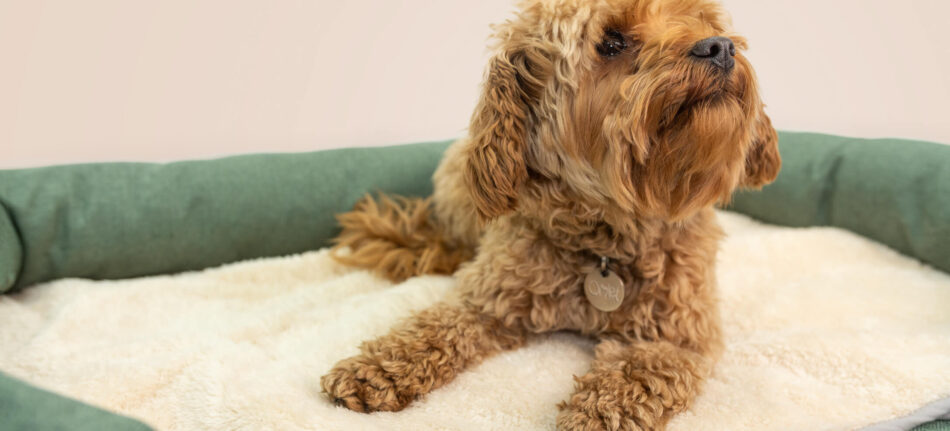
This entry was posted in Dogs
Sleep, eat, nap, play, nap, eat, sleep, repeat….the wonder of a dog’s life! For many pet owners, the sleeping schedule of a dog is an enviable life!
But how many hours of sleep a day do dogs really need? Do Dachshunds need more or less sleep than Danes? Is it ‘normal’ if your dog is sleeping more than half the day away? Omlet knows dogs and we are here to support you and your sleepy pup so everyone can get a good night’s rest!
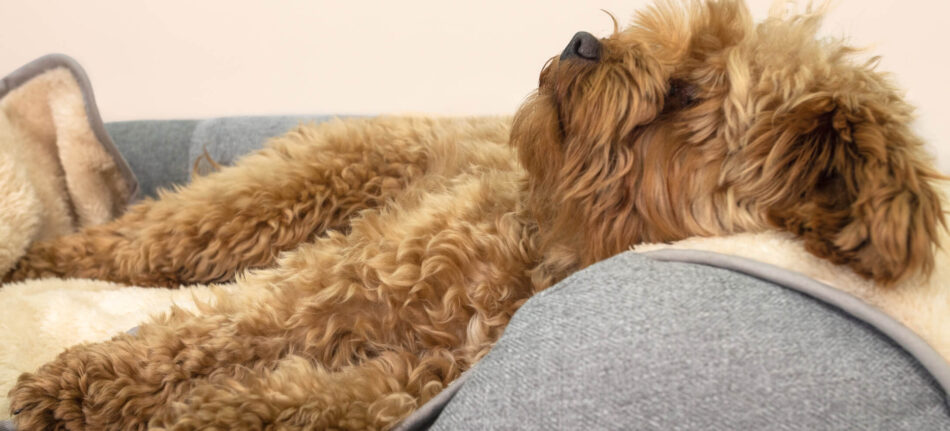
Why do dogs need so much sleep?
Dogs are natural born social sleepers. Unlike humans who abide by circadian rhythms (or a natural sleep-wake cycle in a 24-hour period), dogs can doze anytime of the day and often in any place! But why so many siestas? Sleep provides the same benefits to dogs as it does their owners – it’s a time for the mind to process all it learned that day. Periodic snooze fests throughout the day allow dogs to rest their brains and process all of the information they have absorbed. Just like humans, a dog’s brain needs time to filter through life events and sleep offers the perfect outlet for that! In addition, dogs have heightened senses of hearing and smelling so their brains are taking in more information at a faster rate. Napping and sleeping gives a dog the recharge they need to keep those sniffers active!
Do certain breeds need more slumber? All tails wag “yes” to that question! Age, breed, and even activity levels all play a role in a dog’s snooze schedule. Sleep is essential for all dogs but there are definitely some that like a good cat, er canine, nap more than others! And if you are a new dog owner with a puppy at home, you need to keep reading…
How much sleep a day do dogs really need?
On average, most dogs sleep 12-14 hours a day. Yes, that is correct – half a day spent in a snoozy dreamland! However, unlike humans who get all their beauty sleep in a 7-9 hour restful night stretch, dogs tend to sleep in more irregular patterns. Our furry friends are sleep savourers and rarely get all of their sleep in one long stretch.
While puppies and senior pups sleep closer to 18-20 hours a day, most dogs clock in the shuteye in 45 minute increments throughout the day. Precisely why a good dog bed is imperative for your four-legged napper to truly relax!
Adult dog slumber
Each breed is different, however, most dogs are considered ‘adult’ between the ages of 1 to 5. Since dogs age faster than humans, this stage of their life is when they are the most active, so sleep is still important…just not as much as when they’re a growing puppy. Adult dogs typically only need 8-12 hours of snoozy time to fully recharge.
You may notice your adult dog playing a hard game of fetch or energetically running around in the backyard only to come to a full stop moments later and go straight to sleep. Consider this their automatic reset and totally normal! Dogs are great listeners to their bodies and very good at reacting to what they physically need. So when their body says it’s time to rest, off to a quick nap they go! In addition, dogs process the environments around them through sniffing, hearing, and seeing. After taking in a lot of smells and sounds all at once, a quick snooze is often in order to help their brain make sense of it all. But don’t worry, they will be up and at it again in no time!
Sleep for puppies and seniors
What do puppies and older senior pups have in common? The need for more sleep! If you have ever had a puppy, you know all too well why raising them is often compared to raising human babies. Puppies are pro-nappers! They grow quickly – reaching full maturity as early as 6 months old for some breeds – so they also burn energy quickly. With all that playtime in the early months, puppies need to recharge with frequent sleeps to maintain that level of fun.
Senior dogs like lots of naps too, but not because of the same reasons as puppies. Around age 6 for most dog breeds, their metabolism starts to slow down so sleep is imperative to restore their energy. Just like humans, as dogs get older, their sleep gets longer. Your senior pup will tire faster from any exertion and sleep is their conduit to recharge, replenish, and refresh. So don’t worry if your pouncing puppy or senior pup is snoozing 18-20 hours a day off and on – it’s completely normal!
Day vs. night sleep
If you had the option to stay up late or sleep in late, which would you choose? Your dog may choose either – OR both – depending on the day! We know that dogs can sleep for 50% or more of their day, but when they get that sleep is dependent upon their age, breed, and the sleeping habits of you, their owner. While humans wait until night time to rest the brain to organize the thoughts and events of the day, dogs can get the same organization of thoughts with frequent sleeps throughout the day.
Dogs will often mimic the sleep patterns of their owners. If you maintain a 9-5 work schedule, you can expect that your dog will catch most of their zzzs while you are at the office. Exercise and activity are important for both a dog’s physical and mental health, so be sure to get your canine companion out for a walk or a good game of fetch before turning in for the night. Tired dogs will stay at rest longer for a night time slumber!
Does breed matter?
So your pug is sleeping more than your border collie? We know that age plays a role in a dog’s sleep patterns, but breed of dog can also be a factor. If you are looking for a lazy fur friend to spend your days with, you may want to consider a Mastiff, Bulldog, St. Bernard, or Beagle as your companion. Conversely, if you are seeking a minimal nap active pup for lots of outdoor activities, then Pomeranians, Labrador Retrievers, or Airedale Terriers will be more your style.
Why do certain dogs need more sleep than others? Exactly how much sleep a dog needs depends on what their specific breed was bred for. For example, dogs that were bred to watch over the livestock or be alert to dangers are less likely to doze off as frequently during the day as their canine counterparts. In addition, large dog breeds may tend to nap more often because they tire faster with all that extra puppy love to carry around!
Let sleeping dogs lie
Don’t bother fixing something that isn’t broken, right? When it comes to dogs and sleep, that is mostly true. Keeping an eye on your dog’s sleep patterns is always important as it will tell you a lot about their physical and mental health. Here are a few key indicators to keep in mind!
Activity
A dog in motion stays in motion! Especially for dogs that are home alone most of the day without any stimulation, it is important for their health and sleep to still get exercise each day. Walks, chew toys and interactive games are all good options to keep fido active and sleepy!
Nutrition
Indigestible diets can lead to lethargy, so be mindful of what fido is feasting on. Just like we don’t always feel great after a huge buffet of greasy food, our canine companions can also feel the impacts of a not-so-indulge-worthy meal.
Mental Health
Anxiety isn’t just for humans – a worried dog can have irregular sleep too! Yes, our furry family members can feel stress, so if you start to notice a change in their normal sleep patterns (i.e. up all night when they used to snooze through until morning), schedule a visit to the vet to get your dog checked out.
Environment
Can you sleep well when it’s too hot or too cold? Neither can your pup! Remember, dogs don’t sweat – they pant. So if you notice they are panting heavily after exertion, they likely need to cool down before a snooze. And if they are curled up in a tight ball before bed, that might mean they need a blanket to get some zzz’s!
Better sleeping habits
Thankfully, identifying the reasons your furry friend may not be sleeping their best is a pretty easy task. Once you pinpoint the issues, you can easily encourage better sleep habits with these tips:
Give a dog a bone! Chewing promotes relaxation for your four-legged friend and is a great stimulation activity for fido while you are at work all day. So stock up on chew toys to encourage more restful slumber!
Healthy diets promote healthy sleepers
Well-balanced diets aren’t just for humans – your dog needs good nutrition, too! Nourishment of high quality proteins, fats, carbohydrates, and fibre will ensure good health and good sleep. And don’t forget regular health and hygiene will also ensure better sleeping habits for dogs of all ages and breeds!
Comfort is key!
Finding ways to comfort an anxious pup can be as easy as finding the right bed! We spend hours debating over the right mattress for ourselves, we often forget that the right dog bed can make all the difference in our pup’s sleep!
Climate is everything!
In the hot summer months, or if your big dog is just a hot snoozer, consider a cooling mat to keep those naps nice and cool! And when the winter temps blow in, remember that dogs tend to sleep more because there is less sunlight for them to produce melatonin! So be sure to have their favourite dog blanket on hand to get cosy again.
So whether you have a puppy or a senior, a greyhound or a German Shepherd, all dogs need sleep! Life is ruff for our furry friends and sleep is how they grow and stay healthy. But as man’s best friend knows best, when the going gets tough, take a nap!
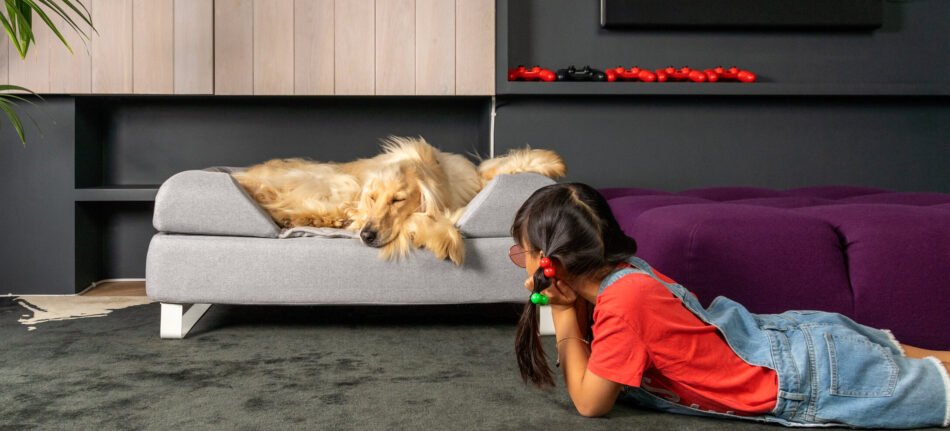
This entry was posted in Dogs
You may be curious as to what to do with your dog when you go on holiday. One solution, is of course, to take them with you! However, in some circumstances this isn’t always permitted or practical. So, what are the other options?
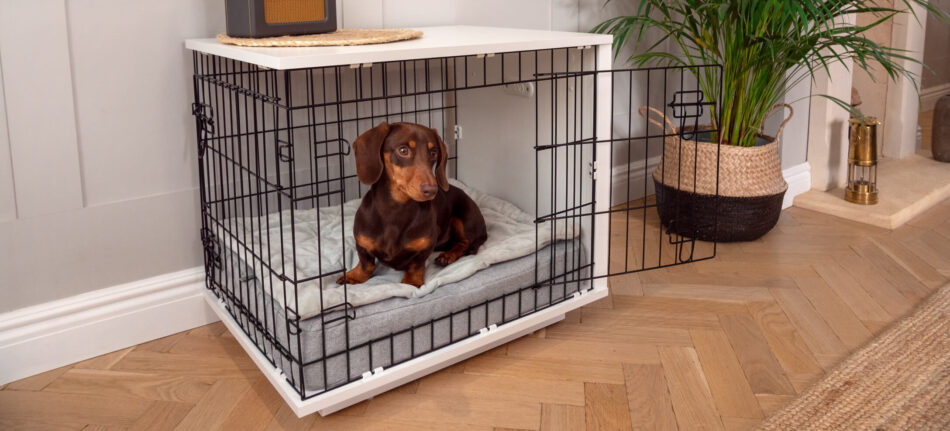
Friends or family
Having to leave the dog behind whilst you’re on holiday is never an easy decision, but it’s reassuring to know that you have left them with someone who you and your dog both know.
Furthermore, this usually works out as the cheapest option (depending on what rates, if any, you have agreed with the dog sitters!).
However, one issue that may come with this is that this could sometimes be seen more as a favour, so your friend might not necessarily take the role as seriously as you’d like. Therefore, it’s fundamental to lay down the ground rules from the get-go and to ensure that they can commit to looking after your fur baby for the duration of your trip.
Boarding kennels
Boarding kennels are another choice for owners who need their dogs to be taken care of whilst they’re away. Before opting to put your dog in kennels, consider whether their personality would suit this type of environment. Whilst some dogs have a great time during their stay and love making new friends, others, unfortunately, won’t settle in the company of other dogs, especially in an unfamiliar place that isn’t home.
If you do decide that boarding kennels are a good option for your dog, you should of course arrange a visit before dropping them off. If the kennel doesn’t allow you to look around the facility beforehand, then it’s not a wise idea to take your dog there to stay. For one, check that the kennel is clean, warm, and secure. Next, ensure that your dog will have access to their sleeping area at all times, with their own kennel unit that has enough space for them to stand up, lie down, stretch out, and turn around. You should also check that your pet pooch will be walked outside every day and that they will have toys to play with.
To prepare your pup for their stay at kennels, you should make sure that you send them with a few things that are familiar to them. For example, their favourite dog toy or blanket such as the Omlet Luxury Super Soft Dog Blanket. By doing so, you’ll help your dog to settle in, knowing that they have a reminder of you and their home!
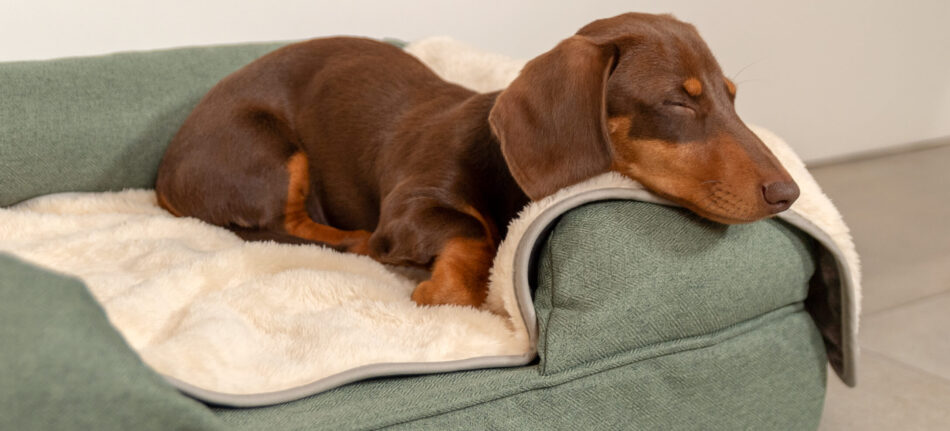
Luxury dog hotels
Feeling a little upset that you get to enjoy a holiday and your dog doesn’t?… Well, how about checking your pet pooch into a luxury dog hotel? Yes, that’s right, a hotel for your dog!
Inevitably, dog hotels are more expensive than leaving your dog in kennels, however, if you fancy treating your pooch to a real taste of luxury, then a dog hotel could be the way forward! The main difference between kennels and dog hotels is the facilities. With luxury hotels, as you’d expect, you’ll often find there to be more outside space, larger rooms, or even paddling pools!
Professional dog sitter
The final main option you have for what to do with your dog when you go on holiday is to hire a professional dog sitter. This means that your pup can stay right at home, whilst in the safe hands of a professional.
Regardless of whether you’re using kennels or hiring a dog sitter, research is key. It goes without saying that we want our pets to be as happy and undisturbed from their usual routine as possible whilst you’re away. Qualifications such as animal first aid, dog behaviour and animal care might be something to look out for when choosing someone, as it may be able to assure you of their credibility.
No one likes farewells with their beloved pet, even if you know that they’re going to be left in capable hands. But with a bit of preparation, you can make this time even easier for your dog! Happy howlidays!
This entry was posted in Dogs

Have you got the world’s cutest dog? Well, probably according to you! But does your furry friend hold any world records? We’re talking extraordinary pooches whose remarkable features and talents have landed them a place in the Guinness World Records! It’s time to find out some fascinating facts about these amazing dogs and the dog world records they hold.
Tallest dog in the world
First up, we have the tallest dog in the world. This world record is currently held by Zeus – a Great Dane from Bedford, Texas. At 3 feet 10 inches tall, this hound needs plenty of food to fuel his supersized frame, specifically 12 cups of it a day!
If you’re interested in finding out more about the world’s largest dog breeds, take a read of our 5 Ways To Figure Out What Dog Breed Is for You blog!
Shortest dog in the world
The shortest dog on the other hand, is Miracle Milly from Dorado, Puerto Rico. This pocket-sized pooch stands at 9.65 cm (3.8 in) tall, weighing in at only around 1lb (half a kilogram).
Miracle Milly is a Chihuahua, so considered a toy dog breed. But what these dogs lack in height, they sure make up for with their large personalities! Milly’s owner Vanesa Semler can vouch for this, claiming that her teeny tiny pup even “knows how to pose”!
Fastest 30m on a scooter by a dog
If you thought that scooters were only for humans, think again! Norman the Scooter Dog hilariously won this title in 2013 when he travelled 30 metres on a scooter in 20.77 seconds. Since then, world record dog Norman the Briard has become an international superstar, featuring on reality TV shows, documentaries, and having his own social media following!
Largest dog litter
In 2004, Tia the Neapolitan Mastiff from the United Kingdom gave birth to 24 puppies via a Caesarean section. To put that into perspective, the average dog litter size for this breed is between 6-12. As it stands, this dog world record is yet to be beaten. This being said, in 2019, a similar new world record for the largest dog litter born naturally was achieved by Mary Jane, a Great Dane and American Bulldog cross, also from the United Kingdom.
Longest dog tail
Now we have the longest dog tail! Keon from Westerlo, Belgium has a tail that measures 76.8 cm (30.2 in)! The gentle giant is an Irish Wolfhound, who achieved this dog world record in 2017 after having his tail professionally measured by his vet.
Highest jumping dog
The world record for highest jump by a dog is currently held by the very talented Feather, a greyhound from Maryland, who can jump 191.7cm. Greyhounds are known for being remarkably agile, but even by breed standard, a jump of this height is still incredibly impressive!
Longest living dog
You might consider your furry friend to be elderly once they reach double digits, but have you ever heard of a dog living on into their late twenties? Well, Bluey the Australian cattle-dog did just that by surviving until 29 years old! Born in 1910, Bluey lived a life working amongst cattle and sheep until he peacefully passed away in 1939.
Most tennis balls in a dog’s mouth
Think your dog likes to play fetch? How about with 6 balls at a time? This amazing dog world record is currently held by Finley, who can hold 6 tennis balls in his mouth at once! Finley the Golden Retriever from New York first showed his love for tennis balls as a puppy and hasn’t stopped since!
We hoped that you were amazed by these Guinness World Records and what our furry friends really are capable of!

This entry was posted in Dogs

Is it time for some well deserved time off? For some, an exotic island getaway may be on the cards, and for others, a few days away camping will be more than enough to reflect, relax, and enjoy the break! One thing that all dog owners will agree on though, is that our pets are part of the family. And rightly so, we want them to be included in making special memories (including holidays!). If you’ve never been away with your pet pooch before, you may be asking the question ‘can I bring my dog on holiday? or maybe you’re just a little unsure how to go about organising a trip with a four-legged addition. So, here’s everything you need to know about taking your dog on your summer getaway.
What preparation should I do before taking my dog on holiday?
First and foremost, to make your trip as enjoyable for all as possible, you should ensure that your dog is holiday-ready before setting off! This includes making sure that they are properly trained e.g. having a reliable recall and being able to settle in their crate. Not only will having a well-trained dog make the holiday a lot more enjoyable but will make it a lot safer, too.
Furthermore, you should also be sure that your destination truly is dog-friendly for your dog. Just because somewhere has labelled their property or attraction as ‘dog-friendly’ doesn’t necessarily mean that the needs of your pet, who you of course know better than anyone else, will be met. For example, is the garden properly secured? Or is the property located in a particularly lively resort which could result in your dog becoming overwhelmed? Do they allow dogs of all sizes or just those under a certain weight? It’s important to have questions like these answered before going away.
You should also visit to your dog’s vet, where you can check that their vaccinations, and flea and worm treatments are up to date. Just like us, dogs can be affected by motion sickness when travelling. If you know this is the case for your pet, your vet will also be able to prescribe your dog medication for the journey. If you’re travelling abroad, you will also need to be provided with relevant documentation, which we will discuss shortly.
How can I travel with my dog?
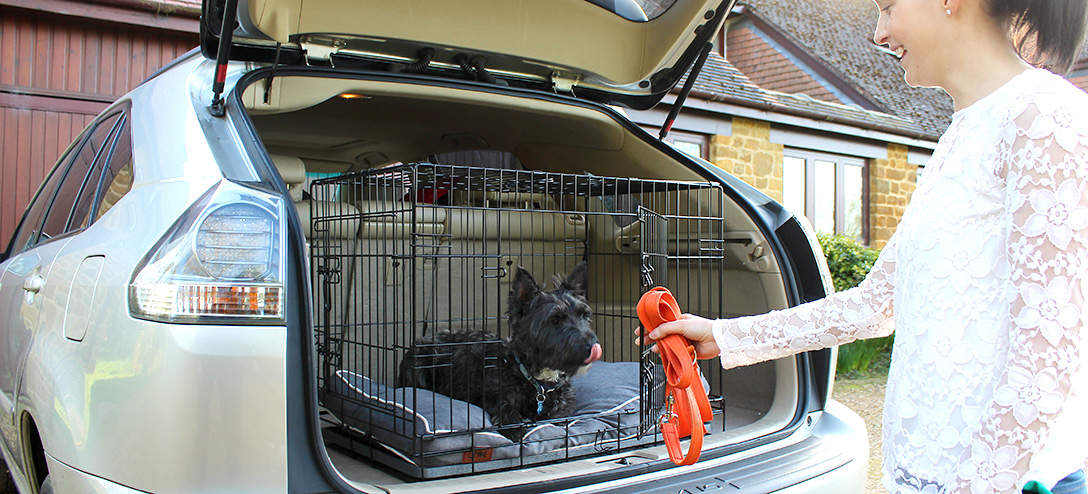
Travelling by car
If you’re holidaying in the same country, the chances are that you’ll be travelling to your destination by car. Before setting off on a long journey, you’ll want to make sure that you have everything you need to ensure the ride is as comfortable and safe for everyone as possible. For one, your dog needs to be restrained in the vehicle either with a dog seat belt, pet carrier, dog cage or dog guard. In most countries this is a legal requirement. In the Animal Welfare Act prohibits a person from transporting a dog in or on a vehicle unless the dog is restrained or enclosed in a way that prevents the dog falling from the vehicle. Failing to do so will result in a fine, which varies from state to state.
If you are travelling on warm day, you’ll ideally want to head out as early as you can in the morning or late in the evening when the car will be at its coolest. During your journey, it’s important to make sure that your dog doesn’t overheat. You can help keep the car cool by keeping the windows slightly open, but not wide enough for their head to be sticking out. Alternatively, turn on the car’s air conditioning, being mindful not to have it directly blowing on your dog’s face.
We recommend making time to stop off at a dog-friendly service stations for all of you to stretch your legs, for your pup to have a toilet break, and to have a refreshment (a portable dog water bottle is a great option!). When you arrive at your first stop, park in a shaded spot if it’s a warm day – this will help keep the car nice and cool for when you get back in. Needless to say, you should never leave your dog unattended in the car at any point on your travels.
If it’s a bit chilly then make sure you provide your dog with a warm super soft dog blanket it’s the best way to feel comfortable on a long journey.
Travelling by plane
We’ve already spoken about travelling with your dog in the car but to get abroad it sometimes means using other modes of transport! When it comes to flying, the rules differ between airlines but in many cases, dogs, excluding assistance dogs, are only allowed to travel in the hold. Some airlines, however, do not allow pets in either the hold or cabin, so please contact the airline you plan on travelling with to avoid disappointment. In some cases if your pet is over 12 years old you will need a certificate stating your pet is healthy enough to fly.
Can I take my dog abroad?
If you are travelling abroad then your dog will most likely need to have an animal health certificate. These can be obtained from your vet but must be signed off by an official veterinarian, so be sure that your practice provides this service. Furthermore, check what the maximum of pets that can accompany you, unless you are travelling for dog training, a show, sporting event or a competition, which you may need to provide written evidence of.
Before travelling aboard it’s very important to check the regulations and requirements, you can find more information on this, visit the Australian government website.
Ultimately, a travel certification will say that your pet is fit to travel, microchipped, is free of anything that has the potential to spread to other animals or humans, and has their up to date vaccinations, as well as yours and your dog’s information e.g. address, dog’s breed, pet and owner’s name etc.
Settling your dog on holiday
Taking your dog on holiday is as big an adventure for you as it is for them! For our pets, a new location means not only plenty of unfamiliar places but also so many new things to explore and smell! Therefore, you should try to keep their routine similar to how it is back at home so that they don’t feel unsettled or stressed. For example, you should give them their food and walks at the same time as you normally would. At the same time, it’s also important to give your pet some time to settle in their new environment by letting them get enough undisturbed rest.
Furthermore, taking something familiar to your dog is also a great way to help them settle. This can be their blanket, bed or a dog toy they enjoy playing with. You can also take a dog pheromone diffuser for a more anxious dog, which can help them to stay calm.
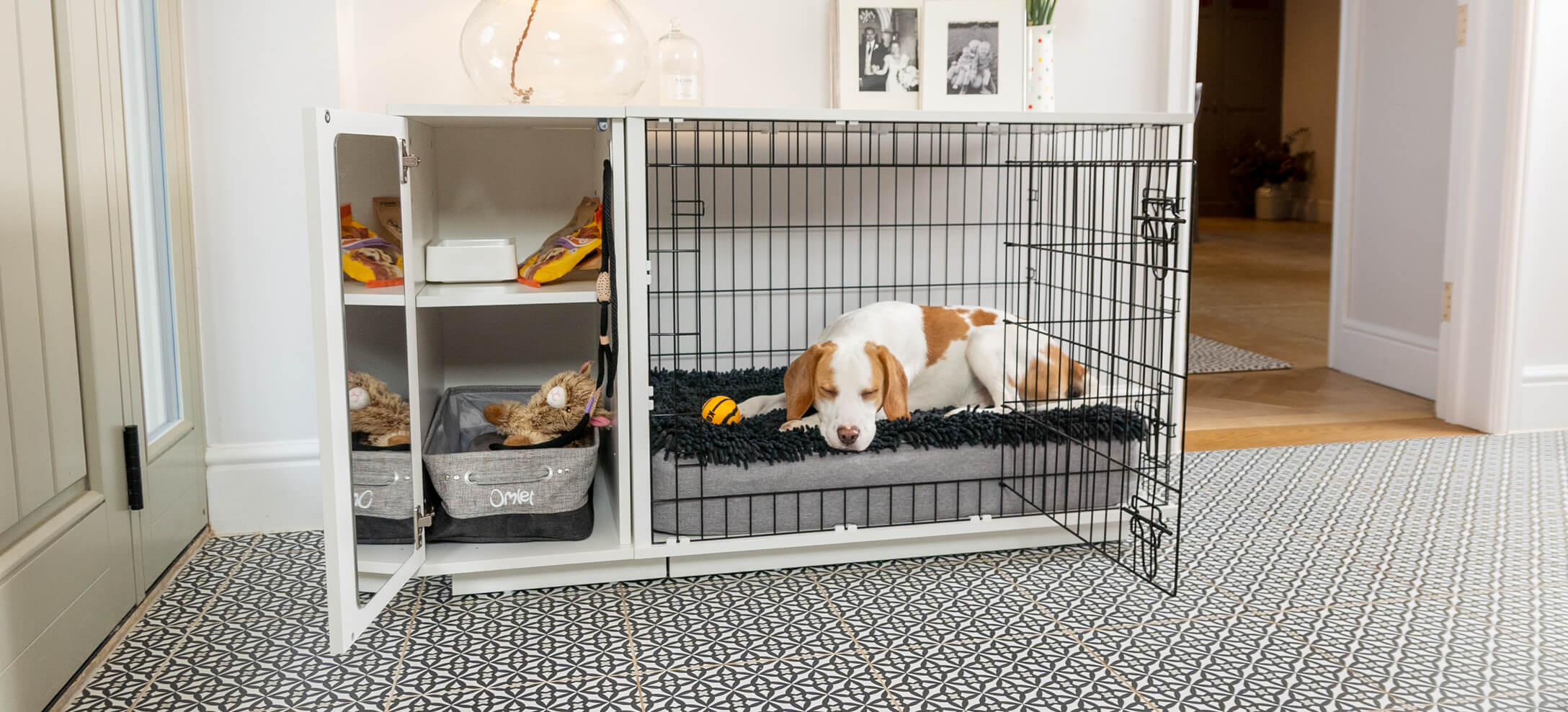
Omlet and your dog’s holiday
Your dog’s holiday can not only be stress-free but an enjoyable trip for everyone with Omlet’s dog beds, and dog blanket to offer them support in a new environment.
This entry was posted in Dogs
In the month of May, we’re answering all your microchipping questions, from, do dogs have to be microchipped, when a puppy should be chipped to how to change the information on the microchipping database to make sure you keep all your details up to date.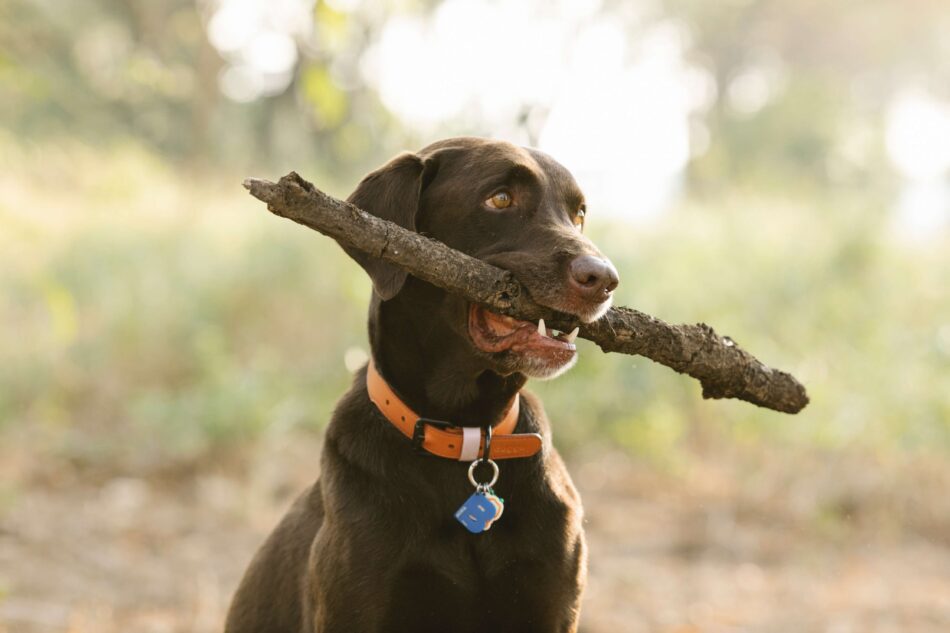
Do dogs have to be microchipped?
As of right now in Australia, microchipping is defined by each state. For example, in ACT, microchipping of dogs is required by law prior to sale/transfer and by 12 weeks of age. Similarly, in WA, as of November 2015, the law states that all dogs must be microchipped. In TAS, section 15A of the Dog Control Act 2000 says that dogs must be microchipped by 6 months of age. Therefore, you should check with your local council to find out what applies to your area.
Regardless, microchipping is there for the safety of your pet and also others, even though it may seem like something out of a dystopian novel. Unfortunately, for the many dogs that are picked up as strays that don’t have a microchip, the rescue centres have no way of knowing who these beloved animals are or who they belong to. For many local authorities, dogs will remain lost or considered a stray for up to 5-7 days and then they are handed over to dog sanctuaries and rescue centres to be rehomed.
The information recorded on the chip will be able to identify your pet to others based on medical information, age, name, address, and details of their pet parents. It really is an important part of being a responsible dog owner.
What is a microchip?
Think of a microchip as a form of ID, like a passport or driving license, but for dogs. Our doggies can’t exactly communicate this sort of information themselves! Although a collar with an ID-tag with up-to-date contact details has all the necessary information, these could easily be removed, or could fall off.
A microchip is a computerised chip containing a unique 15 digit number that will be visible when scanned by a microchip reader. It is the size of a grain of rice and is inserted under the skin around the scruff of the neck between the dog’s shoulder blades with a needle. The chip will contain the owner’s details and a unique code that is specific to your pet.
Will my puppy be microchipped before I take them home?
In preparation for the arrival of your new pup, you need to ensure that your home is ready and that the right safety precautions are in place, toys and food are ready and a snuggly sleeping area is taken care of because your puppy will be doing a lot of sleeping to start with! It is important to understand the daily care of a dog when taking on a new puppy.
We would recommend the Bolster Dog Bed for puppies. The bolstered sides around the bed will provide a little safe barrier to keep your pup in place and stop them from falling out. The covers are removable and washable which is incredibly handy with such a youngster around!
Puppies cannot be sold until they are at least eight weeks old. Some vets will recommend that very small breeds like a chihuahua are microchipped when they are a bit older or bigger, but contact the vet to see if this is the case, and arrange an appointment for this simple procedure.
The breeder will register the puppy on a national database and the breeder’s details will forever be associated with the microchip. It will also include the keeper’s information which can be changed or updated if the information changes or the dog gets a new owner.
You can make sure your puppy is microchipped by asking your local vet or the breeder themselves. They will use a scanner that reads the chip and identifies the information.
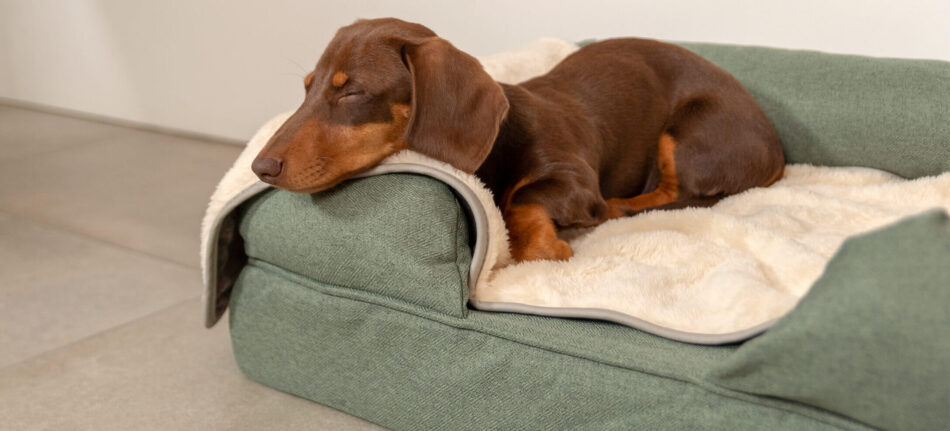
Is my dog’s microchip proof of ownership?
The details of the microchip are registered through an approved database, not through the government. A person is considered to be a ‘breeder’ if they’re the owner of a dog that gives birth. The person who acts as the primary caregiver will register as a “keeper” rather than an owner of the dog. The keeper does not provide proof of ownership, however, the keeper will have a legal responsibility for the dog, so if the dog strays or causes injury, they will be held accountable.
If for whatever reason you have had to pass your dog over to someone else because you are unable to take care of them or are moving away, then it would be your responsibility to ensure that the new owner is given the correct microchip registration paperwork so that they can update the details themselves.
Who is responsible for microchipping a puppy?
When it comes to microchipping it is the responsibility of the dog breeder to ensure that all puppies are microchipped before they are rehomed.
If you are considering a rescue puppy rather than going through a breeder, the animal sanctuary will be responsible for updating the details of the dog and new keeper.
How do I change my dog’s microchip details?
When your dog’s identity chip is registered on a database you will receive a notification to confirm the details are correct and you will be given a microchip number. This information can be checked by contacting the database itself. You should also contact them if you, for some reason, need to change the details. There is a small fee associated with these administration changes, but it’s imperative that the information is correct in order to make sure that the chances of you being reunited with your pet if they go missing are secured.
If you are unsure which database your dog’s chip is registered with then you can get this checked by your local vet.
What happens if I don’t get my dog microchipped?
In an attempt to eliminate strays roaming the streets, dog theft, and putting immense pressure on animal sanctuaries and rescue centres it is the responsibility of the dog owners to make sure that their dogs are chipped and that the details are correct.
Why should I get my dog microchipped?
If your dog goes missing and is found not to have a chip then the chances of them being reunited with their pet families are very unlikely. Your dog wearing a dog collar with an id-tag is simply not enough. This will give you peace of mind knowing that if anything were to happen to your dog it could be returned to you!
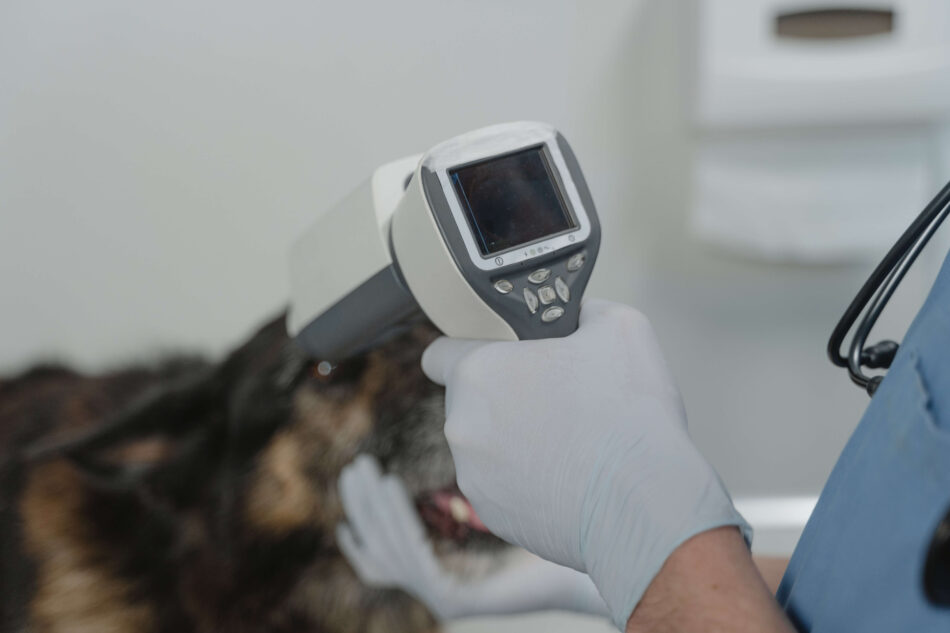
What if my dog’s microchip doesn’t work properly?
A microchip is designed to last for the duration of a dog’s life, however, like with all things to do with technology, there is always a potential for them to fail or not work properly.
If for some reason the chip details are incorrect or it is not working properly you would need to contact the database itself or visit your vet who will be able to check to see if the chip is working and attempt to diagnose the problem.
Where can I get my dog microchipped?
Vets and dog breeders are the main organisations that provide a microchipping service, but it can also include registered dog walkers and groomers, as well as some animal charities.
How can I find out if my dog is microchipped?
If you have any concerns about whether your dog is microchipped then the best thing to do would be to visit your vet who will be able to scan the dog to check if there is an implanted chip. If that isn’t possible then other members of the dog lovers community such as a registered charity would be able to help.
How can I check my dog’s microchip information?
This information can be obtained through a microchip database, or your country’s equivalent. Dog owners will have a microchip number as part of the registration process and the relevant paperwork. This way, you will be able to access the information easily through a registered database.
Can microchipping hurt my dog?
As a dog lover, the last thing you want to do is hurt your dog, but microchipping is a very quick and simple procedure, even if it does involve a needle! It may cause some slight discomfort to your dog, but it will soon pass. It should be seen as a simple standard vaccination, which in the long run will protect your dog and keep them safe.
How much does it cost to microchip a dog?
The average cost of microchipping your dog is $45 in Australia and this is a one-off fee for the implantation of the chip. Some charities will offer this service for free. If you need to change the details of the chip at any point then there will be a small fee through the database that the chip is registered.
This entry was posted in Dogs
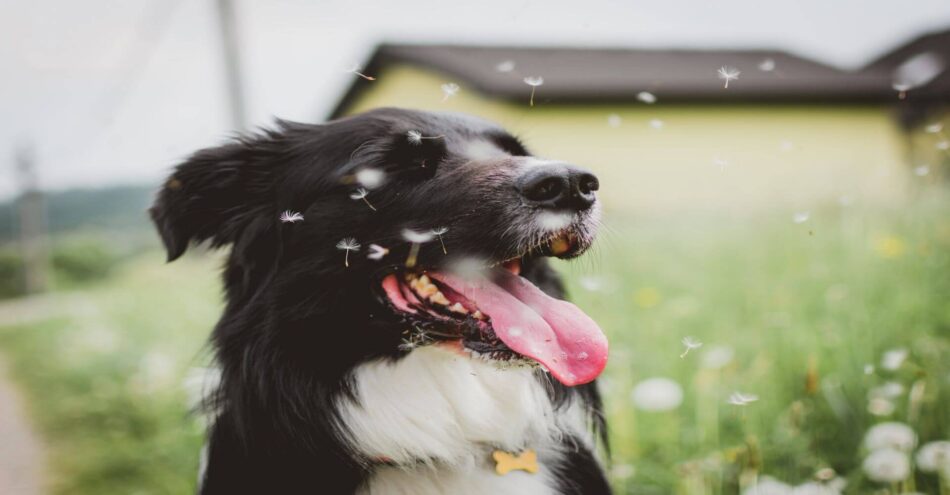
Common allergies in cats and dogs have been identified as 3 main allergy groups, which we explore in this article. Some common allergies are seasonal, and others can creep up throughout the year. Understanding the common allergies in cats and dogs will make being a pet owner easier as you know what to look out for and how to handle it. Allergies can be treated quite easily, but there are a few symptoms or warning signs that we can look out for to make sure that our cats and dogs are healthy and happy.
Persistent seasonal allergies such as the dreaded hay fever kicks in for many of us humans, but we know that we are not alone in this seasonal battle of the bugs as our beloved pets can suffer too. We exhaust alternative medications, home remedies and whatever we can lay our hands on to try and keep these pesky allergies at bay!
Despite doing our absolute best to ensure our cats and dogs are spoiled and looked after, sometimes we cannot always spot the potential threats of allergies or illness.
Allergies in cats and dogs fit into 3 main groups. These groups make it easier to be able to narrow down and identify the cause and then the form of treatment that is required. Whilst you may be able to “self diagnose”, (we all like to play doctor or vet with a quick google search), it is always recommended to check with your vet before attempting any medicated treatments yourself. However, a little research and a general understanding of what you could expect as a pet owner are perfectly normal.
Common Allergy Groups in Cats and Dogs
1. Flea Allergy
This is probably the most common allergy and one that most pet parents are aware of. Cats and dogs will react to the toxins in the saliva following a flea bite, which will result in a reaction on the skin.
Cats will over groom to the point where it’s very noticeable and the skin develops crusts all over the body, known as miliary dermatitis. Dogs tend to nibble and scratch at the affected areas and the skin will develop little red spots.
2. Food Allergy
Food allergies don’t necessarily show up immediately, they could manifest from eating the same food over a long period of time. It is a reaction to a specific protein or chemical in the food, which then appears on the skin. Common proteins which can cause allergies for both cats and dogs are chicken, fish, gluten and egg.
A common symptom of food allergies in cats will be persistent scratching around the head and neck. Symptoms in dogs are not as easy to identify but generally if scratching is more regular and your dog’s skin seems more irritated then it could be a sign of a food allergy.
3. Atopic Dermatitis
These are allergies caused by the environment, similar to hay fever or asthma in humans. They can be seasonal like an allergy to pollen or all year round, for example dust mites. With dermatitis, the skin will be visibly irritated and affected with symptoms including the following:
- Constant scratching in a particular area
- Flaky skin
- Red or irritated skin
- Overlicking
- Chewing
- Fur loss
- Patchy skin
- Skin rashes or spots

Should my pet see a dermatologist?
If you think your pet is suffering from an allergy with any of the symptoms mentioned, you will notice that the skin is affected. A dermatologist will try to recognise the cause of the skin irritation by discussing your pet’s history, for example diet, home life and behaviour. Once they are able to identify the correct allergy group they will be able to perform certain tests to pinpoint the exact cause and recommend any treatment or ways you can help.
Seasonal Common Allergies in Dogs
Seasonal allergies can affect your canine friends in very similar ways to humans. They could be affected by environmental allergens like dust mites, fleas, mould and pollens from grasses, trees, weeds, and flowers. They will not hide their discomfort and will most likely obsessively lick or scratch one particular area. Pay close attention to their bellies, paws, armpit, ears and face. During the seasons of irritation, keep your home as clean as possible and free of mites and pollen. The Topology Dog Bed provides a simple and stylish way to keep your doggy comfortable all year round with easy to clean removable and washable covers.
Seasonal Common Allergies in Cats
Cat allergies are not as common as they are for dogs, though some will display irritation from pollen or bites from fleas. If your cat sneezes a lot then it could have an allergy to pollens. As with dogs, it’s important to make sure their bed is kept clean. A good alternative is the luxury Maya Donut Cat Bed, which has a removable cover that can be washed in the machine.
Respiratory Allergies
Respiratory allergies are far less common in cats and dogs, but they can suffer from them. Symptoms are similar to those of a cold, including watery eyes, runny nose, coughs and yes, even sneezes! Some respiratory allergens could develop into asthma. This could occur from being in a smoky environment, building debris, chemicals or certain cleaning products or pollution.
Pets, like humans, benefit from fresh air, so taking dogs for regular long walks will always be good for them (and you). Whilst you may want to take your cat for a walk, maybe it’s time to consider an Outdoor Catio, which will not only provide a safe space for your feline, but it will also provide them with plenty of space to play and explore and generally keep fit!
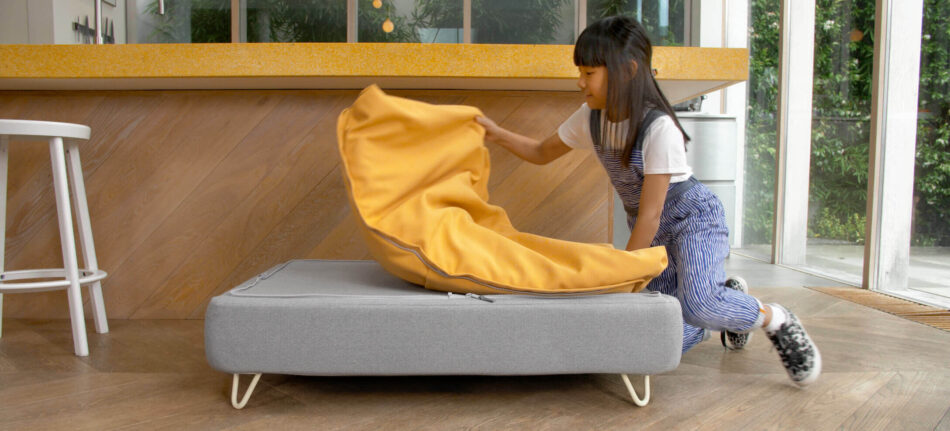
Conclusion
Being a pet parent comes with worries, but also plenty of love, laughter and snuggles along the way. Medically treating your cat or dog can be incredibly difficult to do because you don’t want to be the one that causes them any discomfort or pain, but sadly sometimes it is part of the job description and absolutely necessary to ensure they live a long and healthy life.
If you do suspect that your pet is suffering from any allergies, it is important to talk to your vet and run any concerns you have by them. Most allergies can be treated easily with medication, a change of diet or simple TLC. When dealing with allergies it is important to keep your cats and dogs home clean and you may need to adapt or change your routine to suit their needs.
This entry was posted in Cats
April 24th is National Pet Parent Day, and we thought we would take the opportunity to find out more about what the Omlet community are like as dog owners. Take the quiz and get a customised gift idea for your pooch. We’d love to hear your results! So, what type of dog parent are you?

How much research did you do before getting your dog?
- Not much, I just saw them and knew they were the right dog for me.
- A lot. I knew what characteristics I wanted in a dog, and once I had narrowed it down to a few breeds I spoke to owners and met with breeders to make sure we made the right decision.
- No research. I grew up with dogs of this breed, so I know them and would never go for another breed.
- Absolutely none. I know very little about dogs.
- It was quite an impulse purchase, I sometimes wish I had done a bit more research.
Where does your dog sleep?
- We did get them a super luxurious dog bed, but it’s been unused as they just sleep in my bed.
- To start with we had a crate, but now they sleep on a memory foam dog bed downstairs and they love it.
- In a dog bed by the back door. They’ve got a dog flap so they can go in and out whenever they want.
- Sometimes in their bed, sometimes in my bed, sometimes on the sofa.
- The neighbour had a spare dog bed we inherited, it seems to work fine.
How do you celebrate your dog’s birthday?
- Well last year we just had a picnic in the park with all his friends and played games and had cake, but I’m thinking this year we might rent a dog play place and do a proper doggy birthday.
- We might go for an extra adventurous walk.
- Sorry? I don’t even know when my dog’s birthday is.
- My partner keeps track of when it is and might get them a little gift.
- I normally fry up a sausage or some meatballs to give them for dinner.
Does your dog get to meet a lot of other dogs?
- My dog has more friends than I do – it’s a nightmare trying to keep up with their social schedule!
- We do socialising on walks, but I don’t always trust other dog owners so try to keep it short.
- They are very friendly with the other dogs in the neighbourhood.
- Yeah, most of my friends have dogs so their dogs have become my dog’s friends.
- I’m not sure my dog likes other dogs.
What does your dog have for dinner?
- I get a special dog food that’s locally produced, made from only organic, natural ingredients. It’s expensive, but my dog deserves the best.
- I researched the best dog food for my breed, and that’s what they get. We do give them treats when training, but I don’t think dogs should have human food.
- Dog biscuits.
- Some kind of dog food, normally just whatever is on offer at the supermarket.
- They get normal dog food, but also quite a lot of the food dinner the children don’t finish.
What does your dog do when you go on holiday?
- My dog has got a passport, so they always come with us wherever we go. They need a holiday as well!
- They go to the kennel.
- If we’re just going for a weekend they can look after themselves with some walking help from the neighbours. If we go for longer they stay with my parents.
- These days we tend to just go on holidays where we can bring the dog.
- Friends and family, but people seem to be getting a bit tired of being asked.
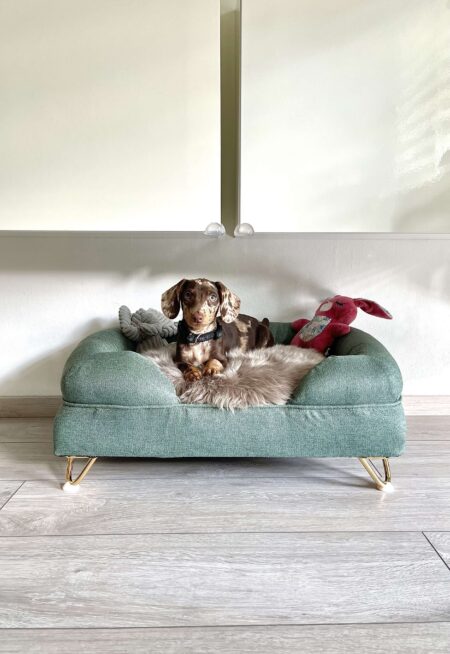 Mostly 1s – The Love Bombing Dog Parent
Mostly 1s – The Love Bombing Dog Parent
You absolutely adore your dog – in your eyes they are perfect. The most important thing for you is that your pooch knows they are loved, so you do everything you can to make sure they have the best time possible.
We assume your dog is pretty trendy, so we would suggest getting a new luxurious dog collar with a matching dog lead?
Mostly 2s – The Responsible Dog Parent
You got a dog because you wanted them to be a part of the family, but you won’t allow them to become a problem for you. You took them to puppy class and still do regular training to make sure they don’t pick up any bad habits. And it’s been worth it, now you can just sit back, relax and enjoy the cuddles.
We trust you have everything essential, but we’re also sure your pooch will love a new dog toy.
Mostly 3s – The Dogs are Dogs Dog Parent
Your dog is super important to you, but a dog is not an accessory to carry around. You think dogs are happiest when they have a job to do, so you make sure your dog gets to work their brain and body. Maybe they’re a farm dog, or maybe they herd sheep, take part in hunts or compete in agility competitions.
We think your good boy or girl might like a new super soft and luxurious dog blanket to keep them warm and cosy after a long, adventure-filled day outside.
Mostly 4s – The Accidental Dog Parent
You don’t really know how you ended up a dog parent, and even if you now really like it, it was never the plan. You’ve had to learn on the job, and sometimes it seems a bit overwhelming, but you know your dog loves you and that they are happy and healthy, and that’s a great feeling.
Get ready for a great summer with your furry friend with Omlet’s memory foam dog cooling mat, a self-cooling addition to your dog’s bed that will keep them chilled for up to three hours.
Mostly 5s – The Very Relaxed Dog Parent
Yes, it’s true your dog is a bit of a pain sometimes, pulling the lead and nicking food from kitchen counters, but it’s not the end of the world – they’re a dog after all! Your dog is truly a part of the family, and you can always do a bit of training later on.
How about treating your pooch to a new comfortable dog bed? We think a colourful Memory Foam Bolster Dog Bed might be perfect for the two of you!
This entry was posted in Dogs
Whilst the demand for buying puppies drastically shot up over the pandemic, there was also a significant rise in those rescuing dogs from abroad. So much so that according to the Human Animal Infection and Risk Surveillance Group, 2020 saw a 51% increase in importing dogs from Romania to the UK alone! But with so many of our pet pooches now being rescued from across the globe, it’s left many pet owners scratching their heads as to what their dogs are exactly! As a result, doggy DNA testing has also soared in popularity, providing pet owners with an easy and convenient method of finding out more about their dog’s genetic makeup. So how does doggy DNA testing work?
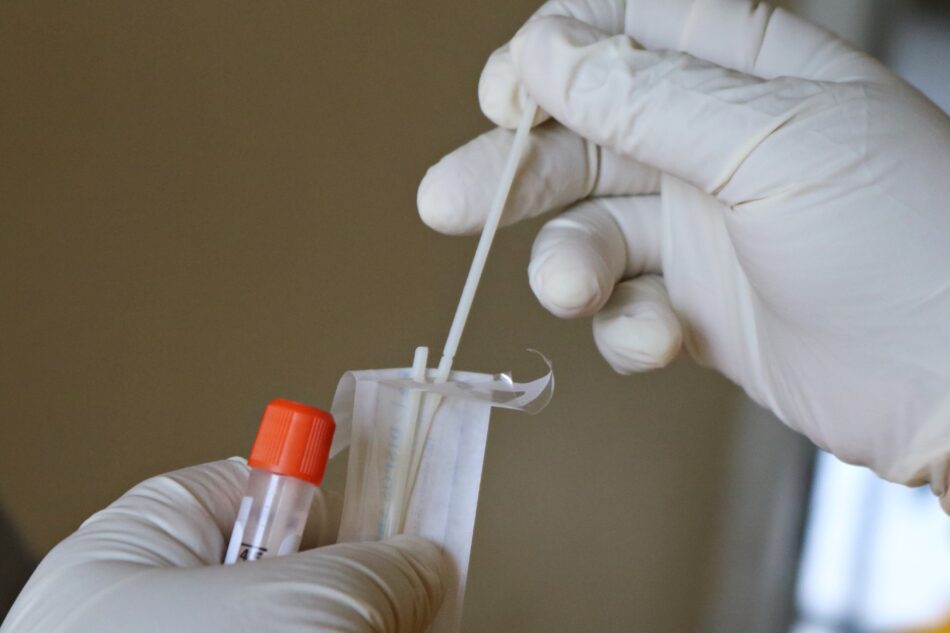
Why Get a Doggy DNA Test?
Dog owners choose to get doggy DNA tests for several reasons, with the most obvious being curiosity! Whilst owners can have some sort of indication of what breed their dog is from either the rescue centre or by their physical appearance, it can be tricky to know for sure. Therefore, testing your dog’s DNA offers a much clearer, nearly entirely accurate, answer to this.
Furthermore, having an understanding of what breed a dog is, may provide owners with a better understanding of their dog’s behaviour. Similarly, this can also help dog parents gauge an idea of potential exercise requirements or what size their puppy will be when fully grown. It will be helpful to read our 5 Ways To Figure Out What Dog Breed Is for You and Best Dog Breeds for First Time Owners blogs, which will give you some further information on breed-specific behaviour.
Alternatively, a dog DNA test may be for breed confirmation for pedigree pups i.e. confirmation that a dog is purebred, as it was sold. Shopping responsibly from reputable breeders is fundamental when buying any dog, however, should a dog begin to demonstrate traits of, or appear as, a mixed breed dog, many owners inevitably would like some clarification. This being said, a doggy DNA test for this may not be completely accurate…
How Accurate Are Doggy DNA Tests?
Common questions regarding this subject are whether dog DNA tests work and how accurate they are. Doggy DNA tests have accuracy rates anywhere between 93% and 99%, but this depends on which specific test you purchase. Generally speaking, however, the more you pay for your test kit, the more accurate it will be.
Genetic markers (used to identify DNA sequences) are one challenge when it comes to how accurate dog DNA tests are. Some testing companies are not able to test for as many genetic markers as others. For example, testing may detect whether a dog is a carrier of a specific health issue or themselves has this issue. However, the fewer genetic markers a manufacturer can test, the less accurate the information they will be able to provide you with.
Furthermore, if using a DNA test to determine whether your dog is purebred, you may be left disappointed. A reason for this is that many purebred dogs have been cross-bred over time to help with health problems that are associated with specific dog breeds. So even if everything otherwise says that your dog is purebred, the result may not reflect this.
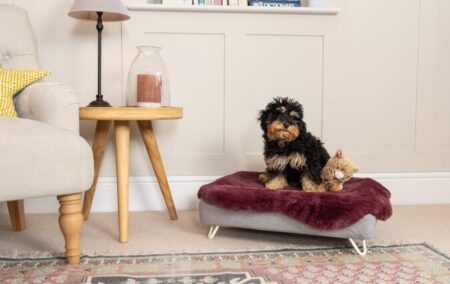
How is a Dog DNA Test Done?
So, exactly how exactly does doggy DNA testing work? A dog DNA test, also known as a genetic test, is conducted similarly to how human DNA tests are. Put simply, a DNA test works by checking a DNA sample via a cheek swab, extracting DNA from saliva, which painlessly collects cells from inside of your dog’s cheek.
When you buy your dog’s DNA test it should come with simple instructions on what you need to do. However, the basic procedure is to first remove the swab from the tube you will receive in the doggy DNA test. Next, swab your dog’s cheek by gently rubbing around the inside of their mouth for usually up to a minute, before removing the swab and placing it back into the tube. After obtaining the sample, you’re ready to send off your test to the manufacturer to get the test results! Of course, with any testing, user error can occur. Therefore, reducing the accuracy of results, but it’s a generally very easy process.
How Quickly Can You Get Results?
How quickly you can get your dog’s DNA test results really does depend on what test you have bought. Some tests can provide DNA results in just two weeks, whereas others can take up to two months. When looking into dog DNA test kits, this is a factor to consider, so look into testing companies that can offer a fast turnaround time if you need results quickly.
Can You Get A DNA Test For Cats?
Pet DNA tests can also be done for other animals such as cats! But it’s not quite reached the popularity that dog DNA testing has just yet. This is mostly for the reason that it’s incredibly difficult, in fact nearly impossible, for a cat DNA test to provide you with an accurate breakdown of their breed. It also goes without saying that depending on your cat’s temperament, obtaining the saliva sample itself might be a little more tricky!
Where Can You Get a Doggy DNA Test?
Interested in doing a doggy DNA test? These can either be purchased online or carried out at the vet. There’s an abundance of kits on the internet, so be sure to look at verified reviews for the best accuracy and result time before making your decision!
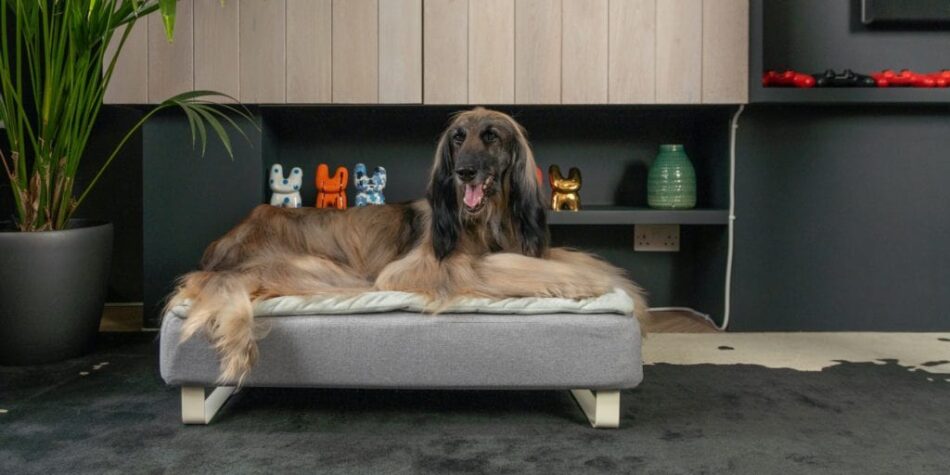
This entry was posted in Dogs
 Autumn is here so why not kick off the new season by starting a new project or getting organised! it presents the perfect opportunity to have a bit of a change! So why not get your cat or dog involved with your overhaul so that they can start the season in tip-top condition! So, how do you begin to clean up your cat or dog’s life?
Autumn is here so why not kick off the new season by starting a new project or getting organised! it presents the perfect opportunity to have a bit of a change! So why not get your cat or dog involved with your overhaul so that they can start the season in tip-top condition! So, how do you begin to clean up your cat or dog’s life?
Remove Pet Hair From Around the Home
Before making a start to your cat or dog’s clean, grab the supplies and get to work on removing any pet hair or dirt from around the home. Many pet parents will agree that getting rid of animal hair from around the house seems to be an impossible task, especially if you’ve got a cat or dog that sheds a lot.
However, there’s no need for harsh chemicals when cleaning the house with pets. For your carpets, a top tip is to sprinkle down some baking soda before hoovering. Not only will this help to remove hair, but the baking soda will minimise odours. Just be sure to use a hoover that has been specifically designed for dog and cat hair to make things a bit easier!
When it comes to cleaning fabric sofas, you can simply use a dry sponge and this will pick up any cat or dog hair lying around. For more household cleaning tips with pets, you can read our previous blog Cleaning Tips For Dogs Who Love Mud!
Using a pet blanket on top of beds and sofas, however, is the best way to keep your furniture protected in the first place, as well as providing your pet with a cosy spot to relax.
Clean Your Pets’ Beds
Now that the household clean is complete, it’s time to focus on your pet, and a great place to begin is by cleaning their bed. We wouldn’t like to sleep on a dirty mattress, so neither would our pets. And with dogs sleeping between 13 and 14 hours a day, and cats between 12 and 16, it’s fundamental to provide them with a clean, secure, and safe place to rest. Fortunately all Omlet beds are conveniently easy to clean, with removable covers and toppers that are machine washable.
Alternatively, treat your cat or dog to a new bed this season. For cats, the Maya Donut Bed comes in a wide range of colours that can add a touch of freshness to your home for the season. The Topology bed is perfect for dogs, with the option of raised feet, which improve home hygiene and airflow.
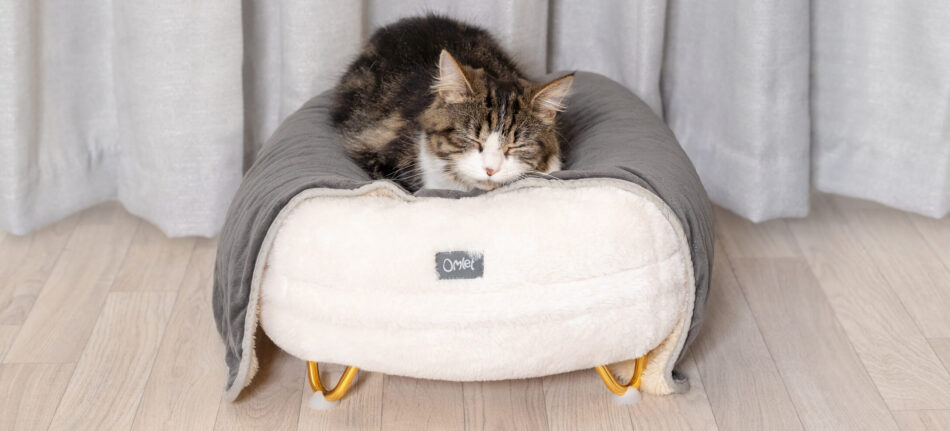
Give Your Cat or Dog a Groom
Your clean wouldn’t be complete without a bit of a pet makeover! Well, not necessarily a full head to paw transformation, but a good bath and brush go a long way! Depending on the breed of your dog or cat, they might need to make a visit to the groomers, but it’s a good idea to keep on top of a basic regime at home. Furthermore, grooming is not only for your dog or cat’s appearance but is also important for your pet’s health by aiding with keeping their skin healthy and preventing fleas or ticks for example.
Treat Your Pet to Some New Toys and Entertainment
A few new toys will be greatly appreciated by your cat or dog, as they adjust to the new season. Or how about treating your cat to their very own catio, which is perfect for indoor and outdoor cats alike, who love adventuring but need to remain safe in the garden.
There’s nothing stopping you from beginning your tidy up from today! Before you start cleaning your home, however, it goes without saying that any cleaning products you use in your house should be pet-safe, so always make sure to check the labels. How will you be cleaning up your cat or dog’s life?
This entry was posted in Cats
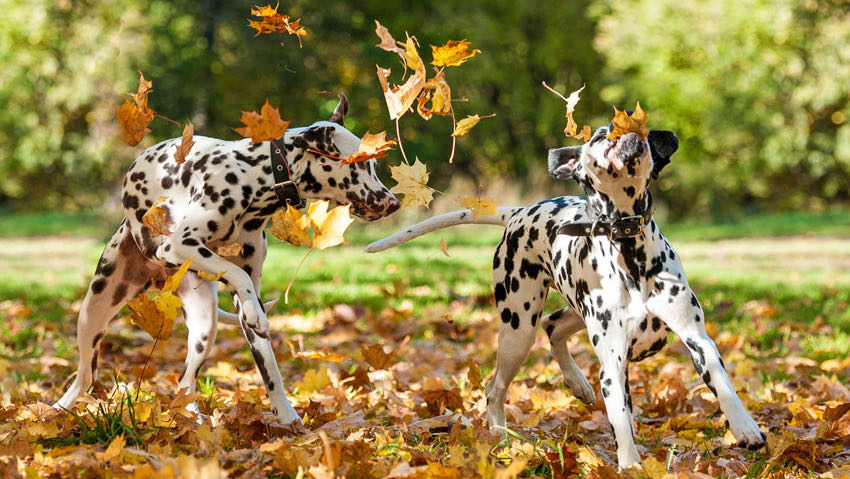
Most dogs love autumn. The children are back in school, which means the house is quiet during the day, and their favourite parks and walking trails are calmer. They’re allowed back on the beaches, there’s no pollen in the air and the temperature is pleasantly cool enough to be able to run around without worrying about overheating. And we haven’t even mentioned jumping in piles of crisp raked-up leaves! Safe to say there’s a lot to look forward to in the coming weeks for both canines and humans, but to make this time of year as amazing as possible for your furry friend, there are some things you might want to invest in or stock up on. Here is some advice and a useful checklist of what your dog needs this autumn.
A warm and comfy bed
When returning to the house after a rainy walk at this time of year, you’ll appreciate getting yourself comfortable with a cosy blanket on the sofa, or even under the covers in your bed. Your dog will feel exactly the same. Make sure your dog has a soft and supportive bed to rest on as the nights draw in. The Omlet Bolster dog beds have a high-performing memory foam mattress that will mould itself around your dog as they relax their bodies, and will provide them with a long, restful sleep all night.
Having a safe and warm space to return to after hours of autumn play is especially important if your dog is still a puppy. Keep your pet’s bed close to the central heating or in a room with a wood burner so they can be in the same room as the rest of the family, and make sure it stays warm throughout the night.
Coats for dogs
Dogs of all breeds can benefit from wearing a dog coat on walks to give them extra warmth and comfort during autumn and winter, but it’s extra important for small or short-haired dogs who are not naturally evolved to deal with lower temperatures.
Dog jackets are available in a wide range of styles and materials, and which you decide to go for is up to you, but we would recommend choosing a waterproof version that’s easy to clean.
If your dog is not used to wearing a coat it might take some time to get them comfortable. Start slowly by letting them sniff and explore the material, rewarding them with treats to give reassurance. Once they seem comfortable around the coat you can put it on for short periods in the house or in the garden, slowly increasing the time.
Reflective collar and lead
To make sure you and your dog are visible when you go for your early morning or evening walks, it’s a good idea to get a reflective collar and/or leash that will alert passing cars. Many walkers carry torches when walking in the dark, so reflective gear can be useful even if you’re not around vehicles. You can also get collars with LED lights that will make sure both you and others can spot your dog on country walks off the leash.
Controlling ticks and fleas
Don’t stop giving your dog tick and flea repellent treatments just because summer is over. Fleas and ticks can still be lurking when your dog is out for a walk and can find their way into our warm homes.
Dealing with mud
Even if your dog is not a fan of jumping in puddles, running through high grass or rolling in wet leaves, walks are going to get wetter and muddier as autumn approaches, so it’s worth making sure that you have everything at hand to deal with a cold and dirty dog. If you’re driving home from walks, it’s a good idea to have a towel or a dog blanket to dry off your dog before they get in the car to make sure they don’t get cold. A waterproof seat cover is another solution.
Get a dog-friendly shampoo for bath time, and a good brush to get rid of dirt and debris from the coat. If you’re not meticulous about cleaning your dog, it’s ideal to have a dog bed that is easy to keep clean like the Omlet Bolster dog bed. With a removable cover, it can easily be zipped off and put in the washing machine when dirty.
Grooming your pet
Your dog will start growing their winter coat in preparation for the colder season. To make sure it’s as healthy as possible, you can give your pooch a groom to get rid of dead hair and matted fur. This is especially important if your dog’s coat is very long or difficult to keep clean. You can start by just brushing through the hair, but if you’re able to it’s always good to let a professional groom your dog.
Keep your dog safe
Autumn does unfortunately also come with some pet hazards. Be aware that antifreeze is highly poisonous to dogs, and can result in acute liver failure and even death. Signs that your dog might have eaten something they shouldn’t include vomiting, seizures and difficulty breathing, so call your vet immediately if you notice any of these symptoms.
Rock salt used on the roads as grit could also be dangerous if ingested, so make sure you clean your dog’s paws thoroughly after walks.
Also, be aware that all sorts of dangers can hide under leaves and on muddy paths. Broken glass, toxic food or litter can seriously harm your pet, so to keep your dog happy and healthy it’s important to always keep a close eye on them when they’re exploring.
Omlet and your dog’s autumn
If you come prepared, this time of year should be a real treat for both dogs and humans, ideal for spending quality time together walking, playing and snuggling. And with Omlet’s Bolster dog bed, dog blankets and dog accessories, this autumn will be the best one yet.
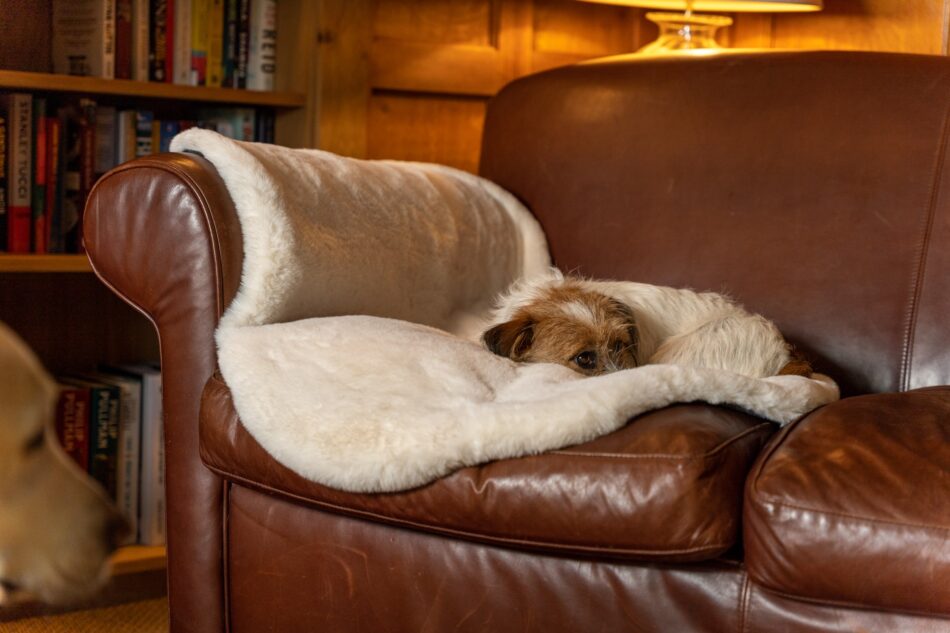
This entry was posted in Dogs
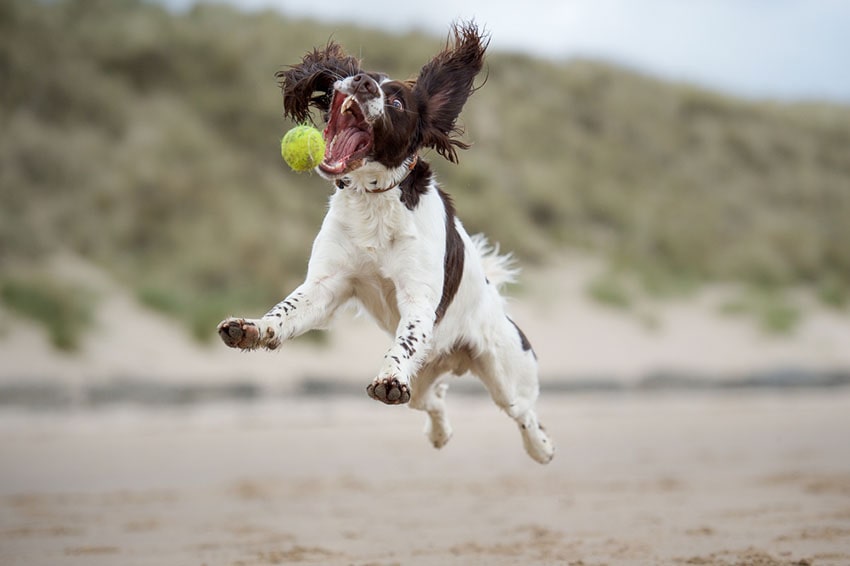
At some point, most dog owners will relate to not being able to find the motivation to get out of the house for a daily dog walk. But, when it comes to our four-legged companions, keeping on top of their exercise regime is essential for their physical and mental well-being. Rest assured though, walking your dog doesn’t have to be a chore thanks to these 11 tips on how you can make dog walks more exciting.
Encourage sniffing
Allowing for a few dog sniff breaks is a fantastic way to make your walk a lot more exciting for your furry friend. Did you know that scientists estimate that a dog’s sense of smell is anywhere between 10,000 to 100,000 times more accurate than ours?! So, while it might be slightly frustrating to feel as though you’re always stopping for your dog to explore, it’s crucial not to forget that this is how our dogs navigate the world. So next time you’re on a walk, give your pup some extra time to use their nose, and you’ll probably have a much calmer dog when you return home too.
Snap some Insta-worthy pics
Could your dog be the next big pet influencer? Why not have some fun and get your pup posing for a few pics while you’re out walking? Accessorize with a cool lead and matching collar and you’re already halfway to getting the perfect pet pic.
Next, you’ll want to find a setting where you can get your dog’s attention to have them sit nicely whilst you snap away. You can find some tips on how to nail your pet photography in our How to take better pictures of your pet blog.
Take playtime outside
Dog games don’t have to be restricted to within the home. Most dogs love to play fetch, so this is always a good place to start. You can even substitute your dog’s regular ball with a treat toy for dogs you can hide some of their favourite snacks in. This will make their usual game of fetch more mentally stimulating and even maybe tire you out as well.
Alternatively, nose work games are also a great idea to incorporate into your dog’s walk, providing them with plenty of mental enrichment. Teach your pup the “find it” command and throw some treats into the grass to have them sniff out where you’ve placed them.
Practice training
Dogs need training throughout their lives and doing so outside whilst on walks is one way to make your regular stroll a bit more fun for the pair of you. Training outside means that there will inevitably be plenty of distractions, so keeping your pup stay engaged will require a lot of concentration. There are various ways to train your furry friend outside, from practising loose leash walking, obedience training, or maybe even agility.
Enjoy a refreshing drink together
How about taking your pup along to a country pub while on your walk? Your dog might even appreciate a little break from their trek, and it means you’ll have a bit of company should you sit down for a drink – a win-win situation! While plenty of pubs accommodate dogs, it goes without saying to just be sure to check before your arrival!
A day out at the lake
While not the case for all, many dogs can swim. Weather permitting, take your dog out for a swim in a dog-friendly lake for a splash around during their walk. If your dog is not familiar with swimming though, it’s important to gently ease them in and never force them to do anything they’re not comfortable with.
After returning home, your pup will need a cosy and warm bed to relax on. The Topology dog bed is a fantastic choice, with a range of mattress toppers including a machine washable, absorbent dog bed Microfibre Topper that simply soaks up any mud and dampness from their swim. Taking your dog swimming on walks is even better in the summertime to help them cool down. Be sure to also take a cooling mat for dogs if you plan on heading out for a long walk to the lake when the weather does heat up.
Have a dog playdate
If your dog gets along well with other dogs, invite a friend to join you on your next walk to make it feel like less of a chore. Not only will you be able to have a nice catch-up with a friend, but your dog will also appreciate meeting up with theirs too.
Go to dog meetups
If you don’t already know anyone else with dogs, dog meetups are another opportunity for you and your four-legged friend to socialize with other people and dogs. Dog meetups are usually held in parks and involve meeting and then walking with other friendly dogs from around the local area. Alternatively, breed-specific dog meetups have soared in popularity in recent years, with a large number of dogs of the same breed all gathering in the same space for one big walkie.
Go somewhere new
Just like us, dogs enjoy a change of scenery. Doing the same thing, in the same place, every single day will eventually lead to you and your dog becoming very bored, so it’s a good idea to every so often change your route on walks. If your dog doesn’t mind getting in the car, you can even head out slightly further out on an adventure to give your dog a whole new experience, such as travelling to a beach. Should you be making a longer journey, Omlet’s range of secure crates like the Fido Classic will help to make for a much smoother ride.
Change the pace
Another way you can make the daily walk more exciting is to change the pace. Speeding up and slowing down at some points of the walk will get your dog’s mind ticking by keeping them engaged with you as they have to focus on what your next move will be.
Alternatively, for a particularly high-energy dog breed, why not change your walk to a jog? This way you’ll be able to get your workout in alongside taking the dog out! Before doing so, just make sure that your dog’s age and breed are suitable for running long distances.
Let Fido guide you
It’s often said that your dog should never be leading the way on walks. But, it can work out as a fun activity to occasionally see where your dog really wants to go. Simply take them out on their dog lead and hand directional control over to them! Although, if you’ve got a bigger dog who pulls on the leash a lot, this might not be the best idea…
Omlet and your dog
Omlet’s mission is to find solutions to pet parent ponders like how can a dog walk become a bit more exciting? And what’s the best way to travel with a dog? With products like the Topology dog bed and the Fido Classic dog crate, our designers continue to innovate products we know will inspire owners, bringing people closer to their pets.

This entry was posted in Dogs
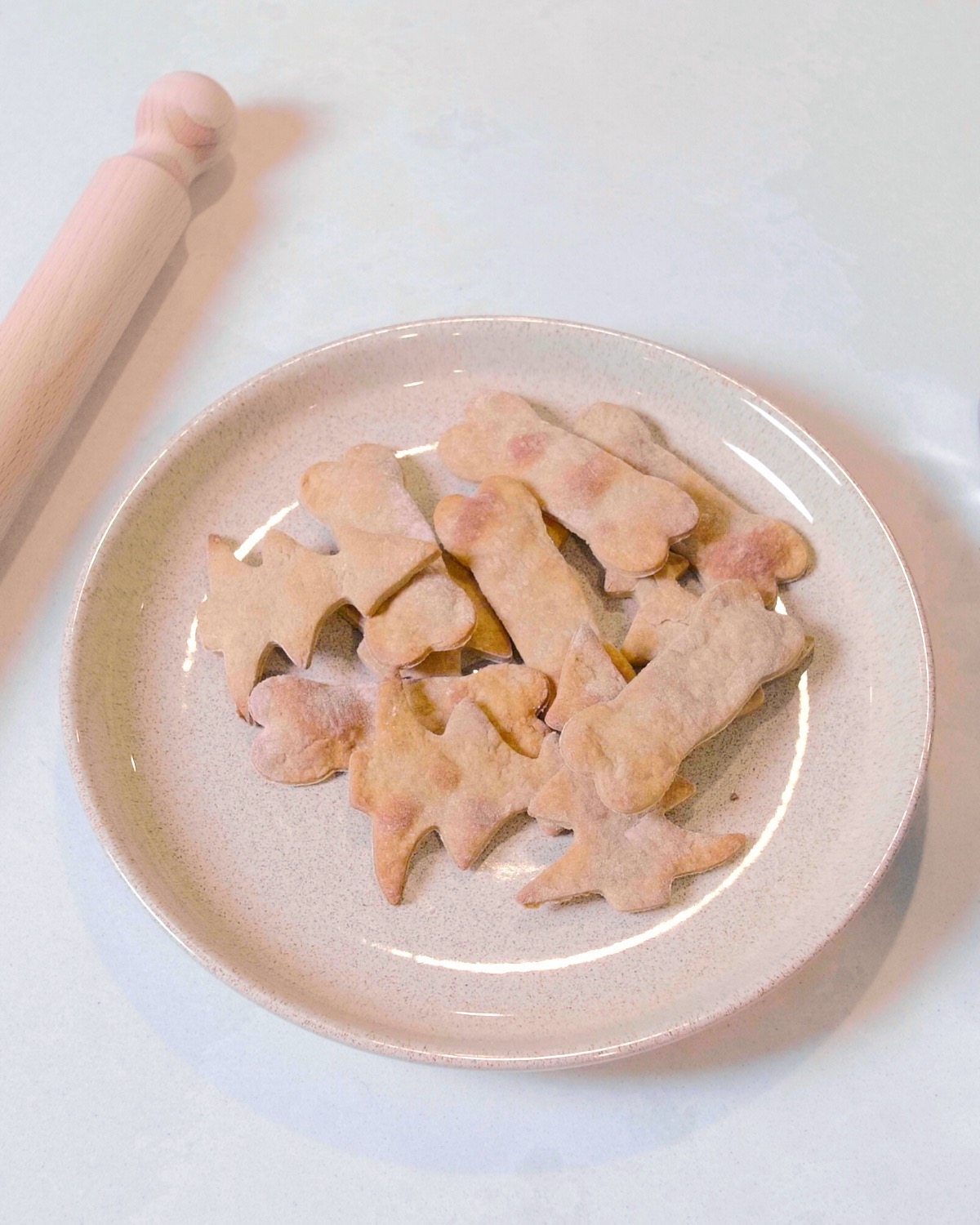
Everyone deserves a treat from Santa Paws this festive season, including our four legged friends! This super simple recipe makes around 15 dog biscuits (using a 10cm cookie cutter), and are the perfect Christmas treat for your dog!
Ingredients
- 150g plain or wholemeal flour
- 80g xylitol-free peanut butter*
- 1 banana
- 4 tablespoons hot water
- ½ teaspoon cinnamon
*Check the ingredients of your peanut butter – xylitol is toxic to dogs.
Method
Prep time: 10 minutes
Cook Time: 15 minutes
- Preheat your oven to 170°C. Mix together the xylitol-free peanut butter and hot water in a bowl.
- Add the banana to the bowl and mash with a fork until most lumps have gone.
- Add the flour and cinnamon to the bowl and use your hands to form a dough. The texture should be quite firm and sticky.
- Lightly flour your work surface and roll out the dough to about 1cm thick.
- Cut out into your favourite Christmassy shapes and place on a lined baking tray.
- Bake at 170°C for around 15 minutes or until golden brown. Once cooked, leave to cool completely before your dog does the taste test!
Your homemade Christmas dog treats can be stored in an airtight container for up to 10 days. A friendly reminder that this recipe is intended as occasional treats for your dog, and should be fed in small amounts alongside a well-balanced diet. These treats are not suitable for dogs with nut allergies or other special dietary requirements.
This entry was posted in Dogs
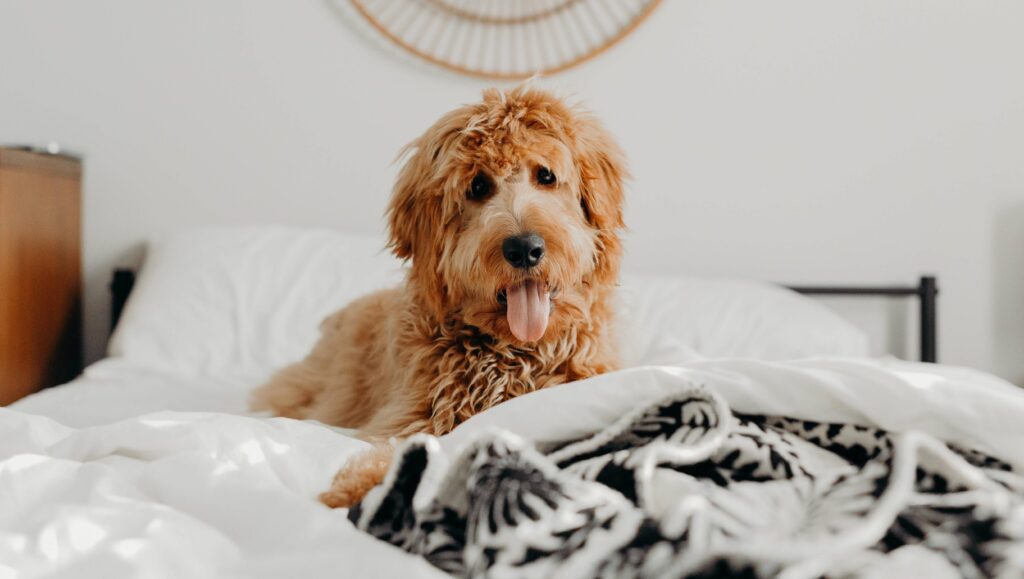
We all love our pets, and sometimes it simply seems far too difficult being apart for just a few hours, even at night. Surveys have shown that up to two thirds of people with cats or dogs now sharing a bed with their furry friend, so it’s clear that the prospect of snuggling up with the cat or dog at bedtime can sometimes be impossible to resist. Many pet owners would agree that co-sleeping with a beloved pet seems harmless. However, with sharing the bed also comes drawbacks. First of all, though, let’s talk about the main benefits of letting your pet sleep on the bed.
Benefits of Sharing a Bed with Your Pet
Bonding
Sleeping with your pet can be a great bonding experience for both parties. Dogs and cats provide their owners with physical comfort and support, strengthening your bond and relationship, which can help your pet to feel more at home.
Security
For dog owners in particular, sharing your bed with your pet every night can be a great security measure if you have any concerns about break ins. Regardless of how your dog would react to any intruders, they’re a great deterrent to any burglars and provide you with a sense of safety at night. Although your cat might not be able to put up much of a fight against any intruders, they’re highly sensitive creatures and can alert you of anything that appears suspicious, such as unusual smells or sounds.
Reduces Stress and Anxiety
Studies show that co-sleeping with your pet can help elevate your mood and reduce stress and anxiety levels. When you cuddle with your dog or cat, having that contact releases the happy hormone of oxytocin. Reduced levels of stress and anxiety levels may also help you to get a better night’s sleep.
Personal Alarm Clock
Like humans, cats and dogs sleep at night and are awake for the day (well, for the most part!). They’re both creatures of habit and love routine so don’t be surprised if you get a very personal wake up call from your pet at 6am every morning. Look on the bright side though, you might never have to set an alarm for work ever again!
Drawbacks of Sharing a Bed with Your Pet
Fleas and Parasites
Unfortunately, cats and dogs are notorious for fleas. If you regularly welcome your pet into bed for a snuggle at night, then you may also be welcoming their fleas too. Although easily treated, having fleas is an unpleasant experience for both you and your pets. More worryingly, co-sleeping with your pet could actually be putting your health at risk. Both dogs and cats can spread parasites such as tapeworm, that can make us sick.
Hair!
If your cat or dog is prone to shedding then don’t expect your bed to escape from the mess! It’s no secret to most pet owners how much of a nightmare it can be to forever be hoovering up your dog or cat’s fur from around the house, so if you don’t fancy adding another chore to the list then maybe it’s best to avoid sleeping with a dog or cat.
Allergies
It’s not a good idea to share the bed with your pet if you suffer from allergies, even if they’re not pet related. Those who suffer from asthma or are sensitive to pollen and dust for example, may find their allergies being triggered from sharing the bed with a dog or cat.
Behavioural Problems
When you allow your animals to share the bed, you run the risk of facing behavioural problems. For dogs that are prone to separation anxiety or territorial aggression, allowing them to sleep on the bed at night could only be worsening these issues. Cats can also suffer from issues such as territorial behaviour, so if you’re met with a hiss or lash out from your cat when you attempt to move them off the bed then it’s probably not a great idea to continue sharing.
If you (or your pet) do decide to sleep alone, it’s important to make sure that you provide them with a safe and cosy bed at night. Omlet stock a wide range of pet beds for dogs and cats that optimise comfort and hygiene, so that your cat or dog will be just as snug in their own space.
If you (or your pet) do decide to sleep alone, it’s important to make sure that you provide them with a safe and cosy bed at night. Omlet stock a wide range of pet beds for dogs and cats that optimise comfort and hygiene, so that your cat or dog will be just as snug in their own space. The new Maya Donut Cat Bed offers first class comfort, made with a luxurious faux fur fabric your cat will love. Or how about trying the Topology Luxury Dog Bed for your pet pooch. With a memory foam mattress base, your dog will be in their element with a number of customisable toppers to fit their personality.
So, as amazing as it can be to share the bed with our favourite furry friends, with risks such as behavioural issues and allergies to consider, the decision really is a matter of personal choice. Either way, it’s always worth investing in your pet’s own bed to give them the option to have their own safe space (however little or often it may be used!).
This entry was posted in Cats

The Omlet shop has something for everyone! With plenty on offer for dogs this year, you don’t want to miss out on this opportunity to get some great gifts for any pampered pooches (and their owners!) that you have in your life.
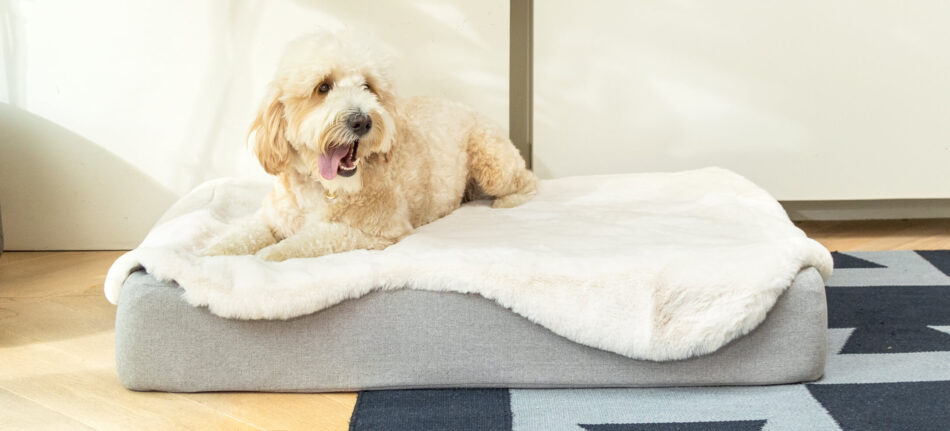
Topology Bed
The Topology dog bed is a must-have for any pup who loves to put their feet up after a long day! With a high performance memory foam mattress base, this bed is also a brilliant gift for any dogs who need that extra bit of support and comfort for their joints. Available with a number of luxury toppers, including a dreamy faux fur sheepskin, the bed is great for keeping your four legged friend snug over the festive season!
Bolster Bed
If you know someone who’s looking to upgrade their dog’s bed for the new year, the Bolster Bed is a fantastic choice. The zip-on, machine washable covers make them ideal for any puppy accidents or muddy paw prints as well.
With a range of 15 different beautiful colours and a range of designer feet to choose from, the Bolster is ideal for any dog parents who want a stylish bed to match the interior of their home! How about opting for the Sage Green or Merlot Red to really fit in with the Christmas decor?
Luxury Super Soft Dog Blanket
The irresistible Luxury Super Soft Dog Blanket will be a real treat for any pups to find under the tree this year! The ultra cosy, sherpa blanket can be placed anywhere in the home to help your dog get a great night’s sleep. You can even position the blanket in your pup’s bed for even more warmth and comfort. Now also available in a very festive poinsettia red and cream design, your dogs can get into Christmas spirit with the rest of the family!
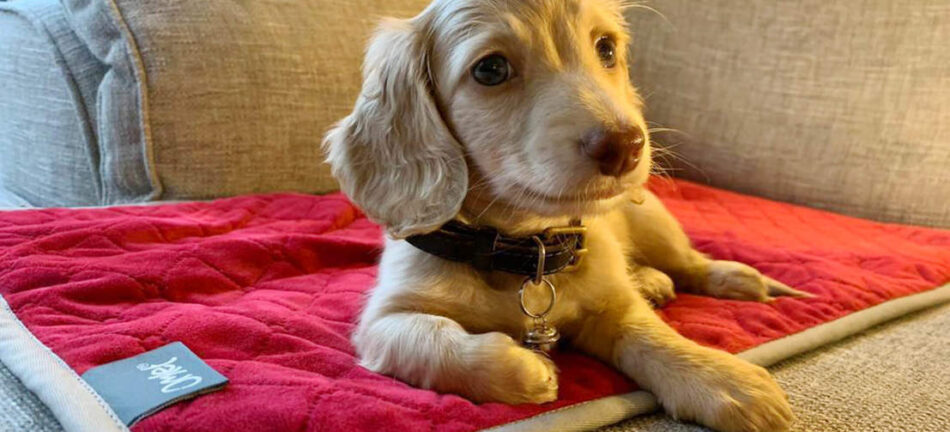
This entry was posted in Christmas


Topology Dog Beds give all dog’s that ‘clean sheet’ feeling.
A recent survey discovered that 22% of dog owners think that the dog bed takes 2 weeks to become unhygienic, yet 23% still leave it a month between washes! No wonder a dog bed is one of the 10 dirtiest spots in the home.
We’re known as a nation of dog lovers, but it has become clear that many owners do not give their dogs the sleeping experience they deserve. In fact, the survey showed that only half of dog owners wash their dog’s bed as frequently as dog and hygiene experts recommend: at least every other week.
The survey found the main reasons people struggle to keep their dog’s bed clean is that it’s time consuming and it leaves their dog without a bed while the cover is being washed and dried.
So how do we make it easier for the owners, and more comfortable and hygienic for the dogs? Enter Omlet’s newest innovation: Topology, the dog bed evolution our pets have been craving!
Topology Dog Beds feature patented, machine washable toppers that easily zip on and off a sturdy and supportive memory foam mattress. This allows owners to quickly swap to a new topper when the dirty one is in the wash. A range of designs from luxurious sheepskin to highly absorbent microfiber and even a beanbag version mean that you can find a topper that suits your dog perfectly, and looks great in your home.
After many days of rigorous play and nights of deep sleep, a worn topper can also be replaced without the need to throw away the rest of the bed. Economical, hygienic and kinder to the environment!
Another exciting feature of the Topology Dog Bed is the possibility to raise the bed with stylish designer feet. Not only does this make the bed blend beautifully in with the rest of your furniture, it also improves airflow around the bed without creating nasty drafts, minimizing dust and debris as well as unwelcome disturbances. Yet another improvement to dog bed hygiene, thanks to Omlet!
Omlet’s Head of Product Design, Simon Nicholls, says: “We wanted to combine all the things dogs and their owners find important into one ultimate dog bed, and what we ended up with was Topology. The combination of the base, the toppers and the feet provides extreme comfort and support, cleanliness and hygiene, and durability. It’s been really nice to see how different dogs tend to go for different toppers and how their favorites match their personalities!”
This entry was posted in Dogs

It’s no secret that most dogs absolutely love getting muddy, rolling around in dirt and jumping in the biggest puddles they can find! This can unsurprisingly result in a very muddy pup and several trips to the dreaded bath! Whilst we can try and prevent our dogs from getting too dirty by discouraging digging and diving into puddles, it’s inevitable that some pups just can’t help getting their paws and fur muddy. Fortunately for us though, we don’t have to let our furry friends get in the way of a clean house. Here are our top tips on how exactly you can keep your house clean with a dog that loves mud.
Tips For Cleaning Around Your Home
Daily Floor Cleaning
It may seem obvious but with a pet comes more cleaning around the house! It’s a good idea to purchase a hoover that has been specifically designed with our pets in mind. These are perfect for helping to remove a buildup of dirt left around the house from your dog and any hair that is stuck in difficult to reach spots. If you’ve got hardwood floors, you can then use a high quality, pet safe surface cleaner to mop over any leftover dirt or potential muddy paw prints.
Plenty of Throws!
Not only do throws look great around the home during this time of year, creating a cosy autumnal feel, they can also help with keeping your furniture in tip top shape! Using throws on your furniture will save you a lot of time (and money), over attempting to clean your fabric sofa. Be sure to use easy to clean throws that can simply be put in the washing machine once they get smelly or accumulate any dirt or mud. You can also get your dog their own blanket like the Omlet Luxury Super Soft Dog Blanket, which can be placed on your furniture or their bed. Not only does the blanket provide ultimate comfort, it’s also dual sided, allowing you to choose a style to best suit your interior.
Consider Dog Bed Choice
There are several dog beds on the market and sometimes it can be overwhelming attempting to choose which will be best for your pet. Something you should consider however, is how it will affect the cleanliness of your home. Without regular washing, it’s easy for your dog’s bed to quickly become dirty with hair, dust, and mud as your pup returns from the garden or a walk. Dog beds with removable covers are a good choice, making for much easier cleaning than those without. Furthermore, dog beds with feet such as the Topology bed can help with keeping your dog’s bed cleaner for longer, as well as keeping the floor beneath the bed clean, minimising a build up of debris compared to dog mattresses that sit directly on the ground.
Tips For Cleaning a Muddy Dog
 Regular Grooming
Regular Grooming
Regular grooming for your dog is essential, regardless of whether your dog has become visibly muddy or not. Whilst some breeds require a lot more grooming than others and are recommended to take regular visits to a professional groomer, you can also keep on top of their regime whilst at home. Between baths, you can use a dry shampoo to get rid of dirt and odours. You can also maintain your dog’s coat using a brush, suitable for their breed to help keep their fur healthy.
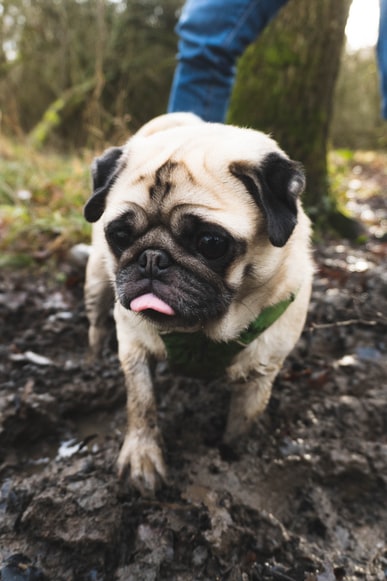 Wipe Your Dog’s Paws After Walkies
Wipe Your Dog’s Paws After Walkies
Dog paws can of course bring in dirt and mud into our homes, so wiping down your dog’s muddy paws after they come back from a walk is one way to prevent them from bringing this inside. To clean muddy dog paws and get the mud gone you can use paw wipes, specifically designed for dogs, gently rubbing away any dirt. Another great tip is to rub in a bit of natural coconut oil to your dog’s dirty paws after paw cleaning. This will help to hydrate and soothe sore or itchy paw pads.
Leave a Towel or Mat by The Door
You can leave a towel or mat by your door as another solution to keep your dog from leaving their muddy paw prints across the home. The Wet Paws Mat for example can simply be placed at the door where your dog enters the house. The mat is highly absorbent, cleaning muddy feet by absorbing the mud from your dog’s paw pads. As you would with a towel too, you can then shake off the mat outside or throw it in the washing machine.
Having a dog that loves the mud doesn’t have to spoil your home. Hopefully after reading these tips you’ll be a lot more prepared on how you continue to enjoy your dog walks without fearing about your house!
This entry was posted in Dogs
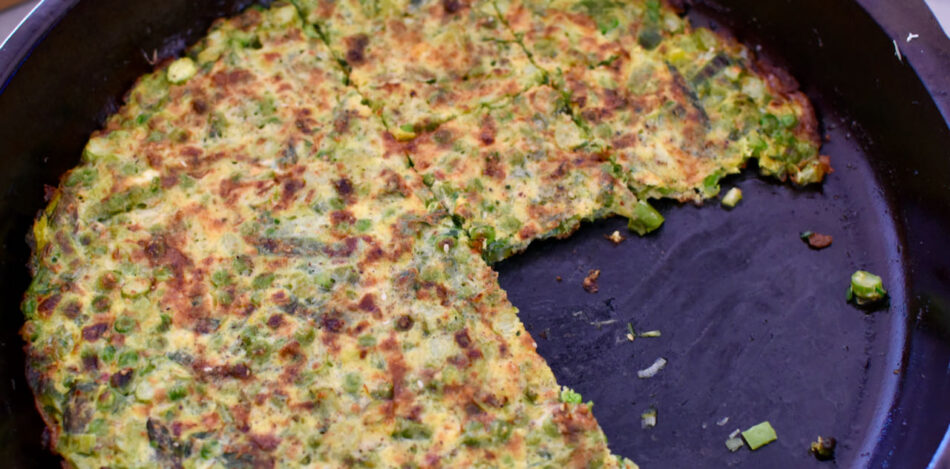
Elise Pulbrook is an Australian chef, baker, Australian Masterchef 2021 semi finalist and, as of recently, – chicken keeper! She’s sharing one of her favourite ways of using those lovely fresh eggs on the Omlet blog, a scrumptious asparagus, leek and pea frittata!
My favourite egg recipe of all time is my Zia Maria’s asparagus frittata. I’ve changed her recipe slightly, adding leek and peas. Sometimes Zia Maria adds chopped boiled potato. At the start of Spring, there has never been a shortage of asparagus in my family. Koo Wee Rup is Victoria’s asparagus country and my large Italian family has roots there. Zio Frank would bring at least one large polystyrene box of asparagus down to Melbourne every year for his sisters to divide amongst themselves.
This is a recipe I make as soon as sweet stems of asparagus come into season. To make this with my own chicken’s eggs is deeply satisfying! This is a thin frittata that is flourless and it is often referred to as an omelet within my family.
Ingredients:
- 200g chopped leek
- 200g chopped asparagus, woody ends removed
- 200g baby peas
- 10g chopped garlic, approximately 2 cloves
- 230g whisked egg, approximately 4 large eggs
- 30g fresh chopped parsley
- 2 -3 pinches of salt, or to taste (every salt is slightly different in its saltiness, know your salt!)
- 1 tsp chilli flakes, or to taste (some chilli flakes are hotter than others!)
- 1-2 pinches dried oregano or zaatar
- 40g grated pecorino cheese, or enough to cover the surface of your omelet
- Light olive oil for frying (at least 100ml, remember to be generous with your olive oil and cook like an Italian!)
Method:
1 – Heat a large well-seasoned cast iron pan or non stick fry pan. If using a 30cm fry pan, the quantities in the ingredient list will allow you to make two omelets. I have used a 35cm cast iron skillet for the frittata pictured. A rule of thumb for the success of many recipes is to choose the appropriate pan for the task at hand.
2 – Add 2-3 tablespoons of olive oil to your pan and begin to sweat your leek over a medium heat. Add two pinches of salt to help extract moisture from your leek and accelerate its cooking time. When your leek has softened and tastes sweet, add your garlic. Allow the garlic to soften and perfume the oil. Next, add your asparagus. Allow the asparagus to fry by slightly increasing the heat of your pan and allowing it to sizzle. Stir occasionally, avoiding any browning. We are aiming for a tender ‘just cooked’ asparagus with a slight crunch and bright sweetness. Add the peas and allow them to blister into radiant green jewels. The peas will only need a moment or two. If using frozen peas, you’re essentially just defrosting them in the pan. Taste the vegetables and, if they are all beautifully tender, remove them from the heat and into a large bowl.

3 – Mix the vegetables with the whisked egg, parsley, chilli flakes, a pinch of oregano and a pinch of salt.
4 – Wipe out your pan, bring to a medium-high heat and then add a generous 5mm layer of olive oil. Don’t allow your oil to smoke but do allow it to be hot enough for your frittata to sizzle once poured into the pan. Once you do pour your frittata mixture into the pan, flatten it out quickly using a spatula, pushing the mixture completely and evenly cover the surface area of your pan. Sprinkle over the grated cheese and the remainder of your oregano.
5 – Turn on the grill function of your oven to preheat while you are waiting for the edges of your frittata to start to brown. Check the bottom of your frittata by using a spatula to peek underneath. Once it has begun to brown, transfer the pan to the oven and leave to grill until the cheese on top has melted and begun to brown. Remove from the grill.
6 – Serve cut into squares as part of an antipasti selection or wedged between buttered sliced bread for lunch. Enjoy!

This entry was posted in Chickens
Meet five pawsome stars from our exciting new video, and find out more about their new favourite dog bed: Topology!
Topology is a super stylish, comfortable and practical bed that both dogs and owners will love! Machine washable toppers zip on and off the supportive memory foam mattress, so that your dog’s bed can easily be kept clean and hygienic. The range of five different toppers also means that you will be able to customise the bed to fit your dog and their personality.
We asked five of the canine characters in the Topology video to tell us which topper was their favourite and why:
Freddie love his Topology Dog Bed with a comfy Beanbag topper
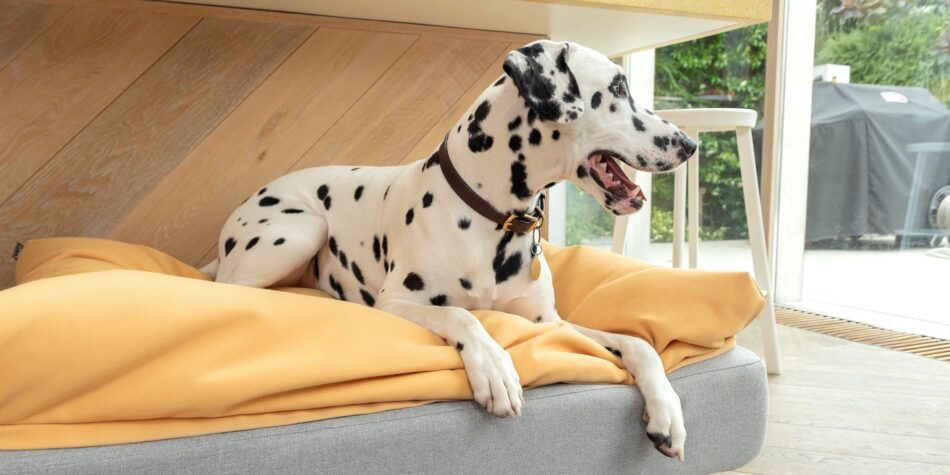
Freddie is a boisterous Dalmatian with bundles of energy! He loves showing off his jumping skills, and will happily throw himself at his bed over and over again to burn off some steam. This isn’t a challenge for the robust fabric and stitching of the Topology Dog Bed, and Freddies favourite topper, the Beanbag, is both fun and super comfortable as it fully lets the dog’s body relax as they lie down on top of it.
It doesn’t happen often, but sometimes even Freddie needs a good, long nap, and as much as the Topology dog bed can withstand his lively playing, it will also provide superb support for his resting body. Thanks to the memory foam layer in the base and the softness of the topper, Freddies owners have no doubt he’s fully relaxed and comfortable when he finally settles in for the night.
Woody could relax for days on his Topology bed with luxurious Sheepskin topper
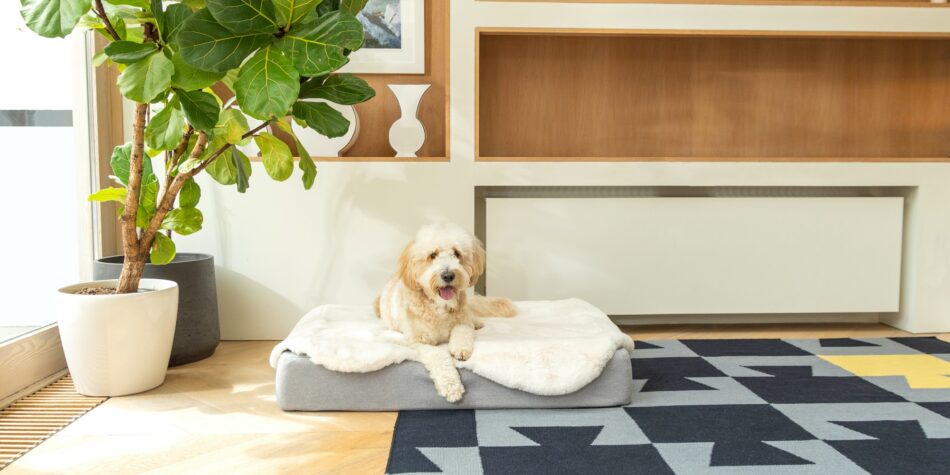
Even if neither he nor his owner would admit to it, Woody the Goldendoodle is what many would describe as a pampered pooch. He won’t settle for anything but the most luxurious of dog beds after his strolls around the city’s parks, so it’s no surprise that his favourite topper is the sheepskin.
Positioned in the best position in the living room, Woody can stretch out on his Topology Dog Bed and feel the super soft fabric against his skin while the memory foam mattress moulds around his body. Woody’s owner really appreciates how easy it is to remove and clean the topper.
Winston feels safe and supported on his Topology dog bed with Bolster topper

Little Winston is a Dachshund, and only six months old. With all the exciting exploring, learning, playing and chewing shoes he has to do all day, it’s extra important that he has a comfy bed to retreat to when he gets tired.
Winston absolutely loves the bolster topper. Not only does the perfectly padded bolster give his little head support when he snoozes, it also encloses the body to provide a den-like feeling that adds a sense of security.
Margot favours the elegance and extreme comfort of the Quilted topper
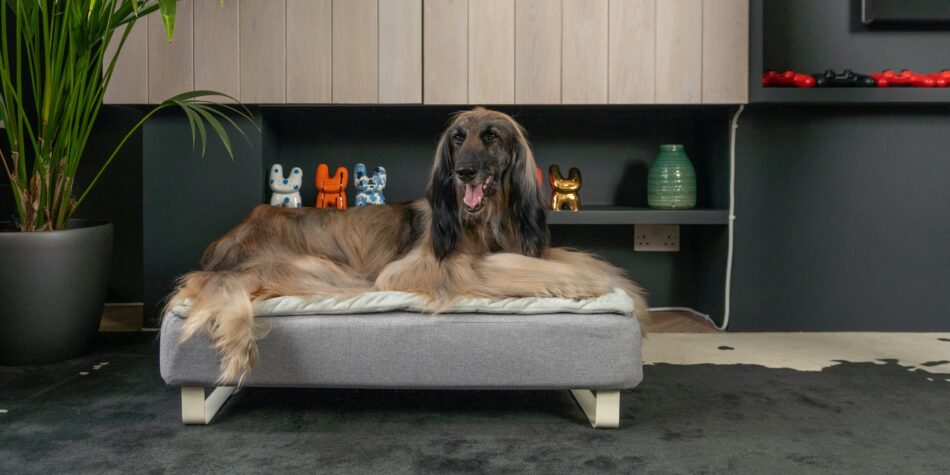
Margot is a classy Afghan Hound who appreciates the simple luxuries in life. She loves being comfortable, preferably curling up by the fire after a walk around the town when she enjoys meeting new dogs to sniff.
Margot’s favourite topper is the super soft quilted version. It stays cool against the body in summer and has a warming effect in winter, and the classic design oozes luxury and comfort. Additionally, Margot’s owners love the look of the soft minty grey against the rest of their furniture!
Esme can dry off and relax on the Microfiber topper on her Topology Dog bed
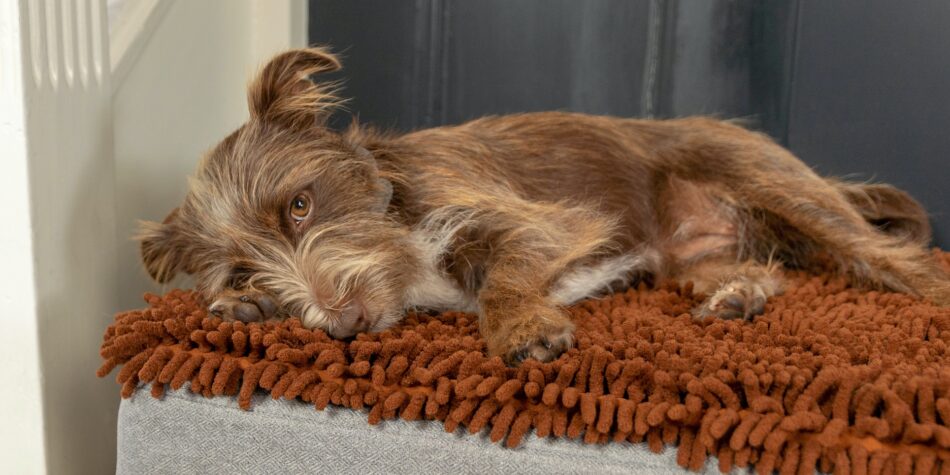
Esme is a perfectly sized terrier mix who loves nothing more than running over wide fields and chasing squirrels between trees on long country walks. Rain and wind won’t stop her – the muddier the better! That’s why the microfiber topper is her favourite. The structured fabric is nice to roll your wet back against, and it will speed up the drying process.
Esme’s owners also love that she’s got a space to dry off after inevitable hose-downs that isn’t the living room carpet! Leftover mud and moisture from walks will quickly and smoothly blend into the microfiber topper, and it can be washed over and over again, allowing for more lovely nature walks.
This entry was posted in Dogs
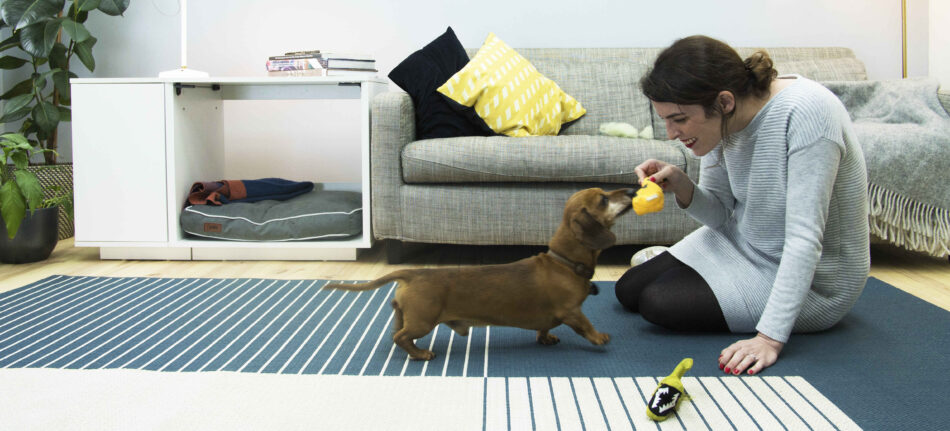
Come rain or shine our dogs need their daily walk… or two, right? But what happens when this just isn’t possible? Sometimes we can’t take our dogs outside for a number of reasons, be it extreme weather conditions, or maybe you’re in isolation. Regardless of your explanation, it’s a good idea to know how to keep on top of your dog’s physical health, as well as having an understanding of how to keep their brains engaged and stimulated whilst inside the home, even for when you’re able to take them for their regular walks again.
Although exercise with your dog inside most definitely does not substitute for your dog’s activity outdoors, there are a number of ideas to help you and your pup out, should you find yourselves in a situation when you can’t leave your home.
Physical Exercise Ideas
Tug of War
Tug of war is a great game to encourage your dog to exercise indoors. Before making a start it’s important that you’ve taught your dog the release command, to ensure they know how to drop their tug toy as soon as you ask them. Once they’ve mastered this, you can begin playing with a durable tug of war toy, which you can use to tug back and forth with your pup.
Create an Obstacle Course
An obstacle course is a fantastic way to get your dog active around the house. You can make your course as simple or complicated as you want, and you’ll probably already have most of the equipment you need in your home! You can use a children’s play tunnel for your dog to run through, or even make your own using an old cardboard box, with treats to lure your pooch in. If you’ve got carpeted stairs, you can incorporate these into the course for your pet, or even use a hula-hoop or PVC pipes to have your pup jump through. You can really get creative here, as long as your dog is supervised at all times.
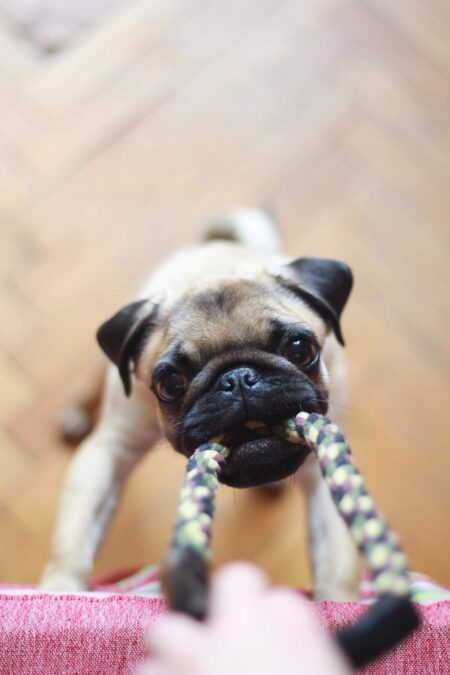 Play Fetch in The Living Room
Play Fetch in The Living Room
This is definitely one for a rainy day when it’s impossible to even play with your furry friend in the garden. This classic game is one form of indoor exercise that is bound to tire out your dog, but be wary of this one if you’re lacking the space inside (or a great aim!). Remember to always use a soft ball toy to play this game to avoid any damage.
Get a Treadmill
Treadmills aren’t just for humans! If you have a particularly active dog breed that you know is dependent on being outdoors for hours of running, a treadmill is a great way to get their physical activity in and tire them out. It’s not advisable to use a treadmill built for us to take your dogs on, so if you’re considering this option to exercise your dog, you can invest in a purpose built dog treadmill. That way you can be assured that your pup will stay safe, knowing the machine is suitable for their weight and joints.
Mental Exercise Ideas
Try Out Puzzle Toys
Exercising your dog isn’t all about physical activity. Physical and mental stimulation are both incredibly important, with mental stimulation being able to use as much energy as physical exercise for dogs. Invest in a puzzle toy like the Treat Maze Interactive Puzzle, a brain game that will really get your pup thinking, providing them with plenty of mental stimulation. Watch as your dog uses up their energy as they work out how they can get to their treats.
Play Hide and Seek
Although hide and seek can involve a lot of physical exercise, it also requires a lot of brain power from your dog. Find a hiding space and have your dog wait until you call their name to find you. When your pup finds your hiding place, give them lots of praise or reward them with a treat.
Teach Your Pup New Tricks
Teaching your dog new tricks is an activity you can do without hardly any space, and something that will keep them mentally engaged. You can begin teaching your puppy basic commands as soon as they arrive home, usually at eight weeks old. However, as your pup gets older these can become more complex and fun.
Scent Game
You can try hiding some of your dog’s favourite treats to really get their nose (and brain) working. This game is perfect for mental enrichment for your pup, and also one you can try to incorporate into your obstacle course. Before hiding your pup’s treats, teach them the “find it” command, so they know what to do when you release them to go on their scent hunt. You can first hide a treat under a towel and then build this up to hiding treats around the house.
Being stuck indoors is no fun for you or your dog, but hopefully after a bit of inspiration you’ve been able to pick up helpful tips to make it a lot less boring before you can be out and about again.
This entry was posted in Dogs






























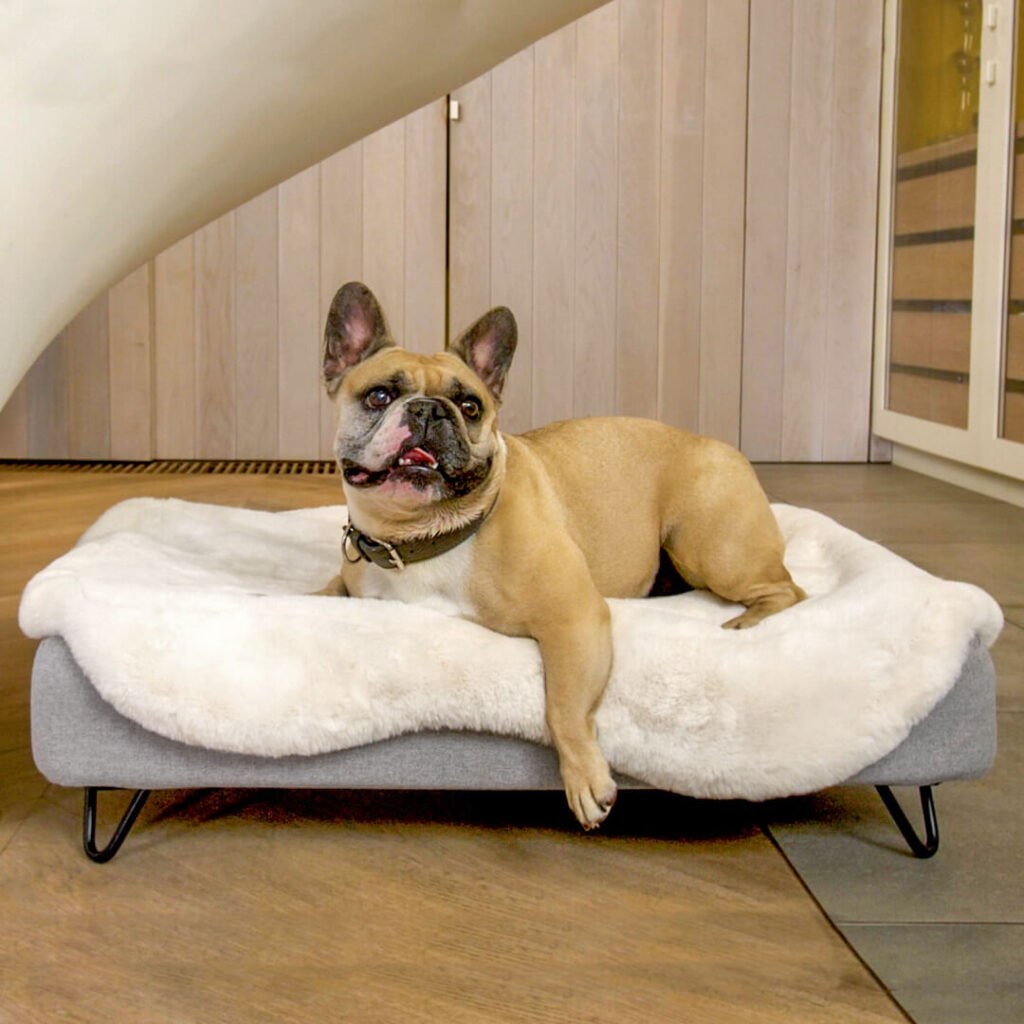
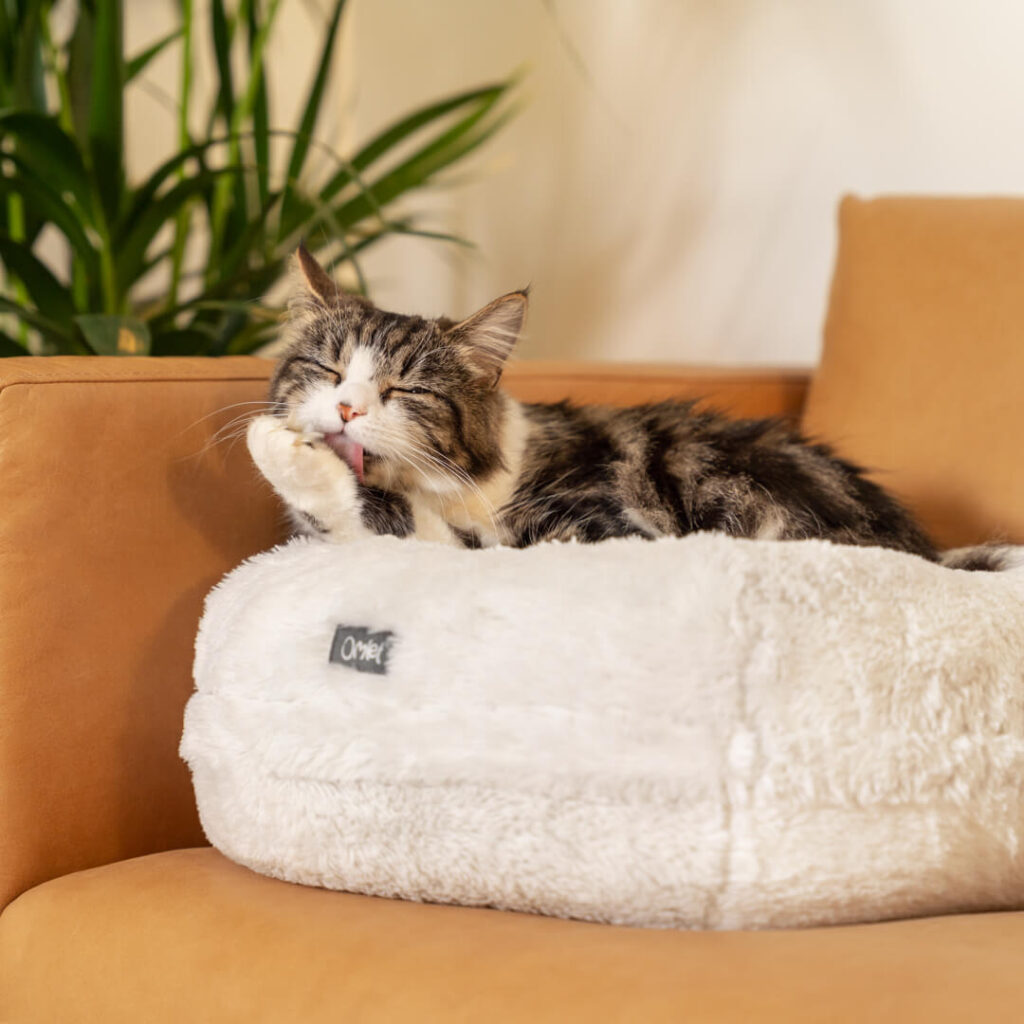





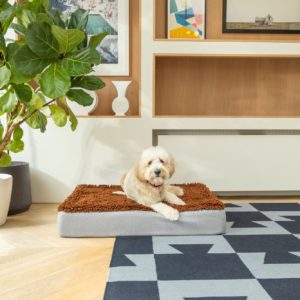
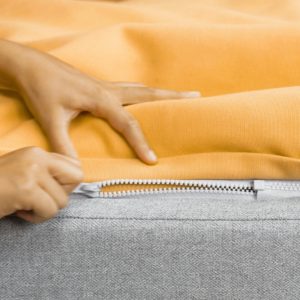
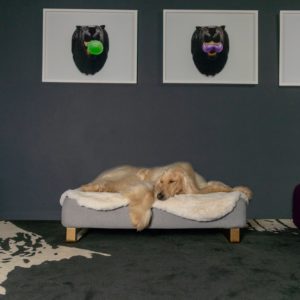

 Regular Grooming
Regular Grooming Wipe Your Dog’s Paws After Walkies
Wipe Your Dog’s Paws After Walkies








 Play Fetch in The Living Room
Play Fetch in The Living Room